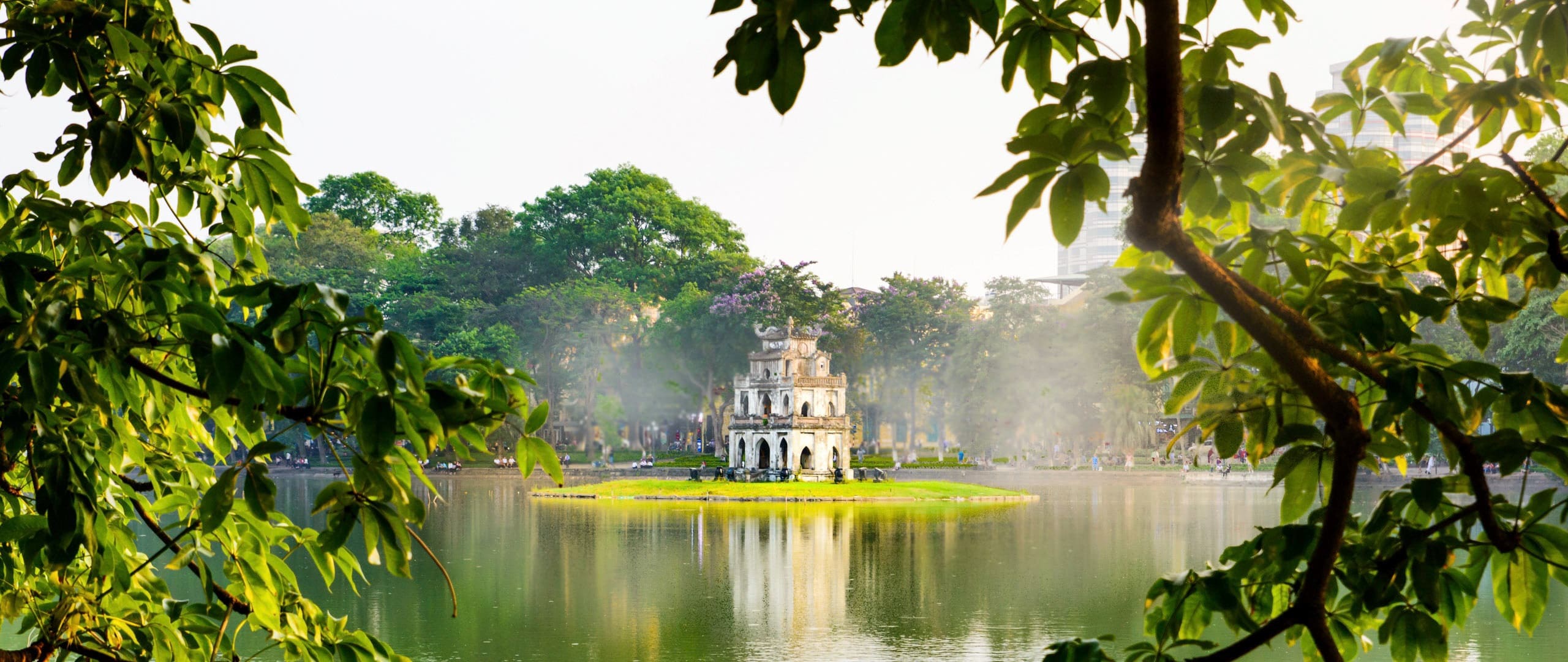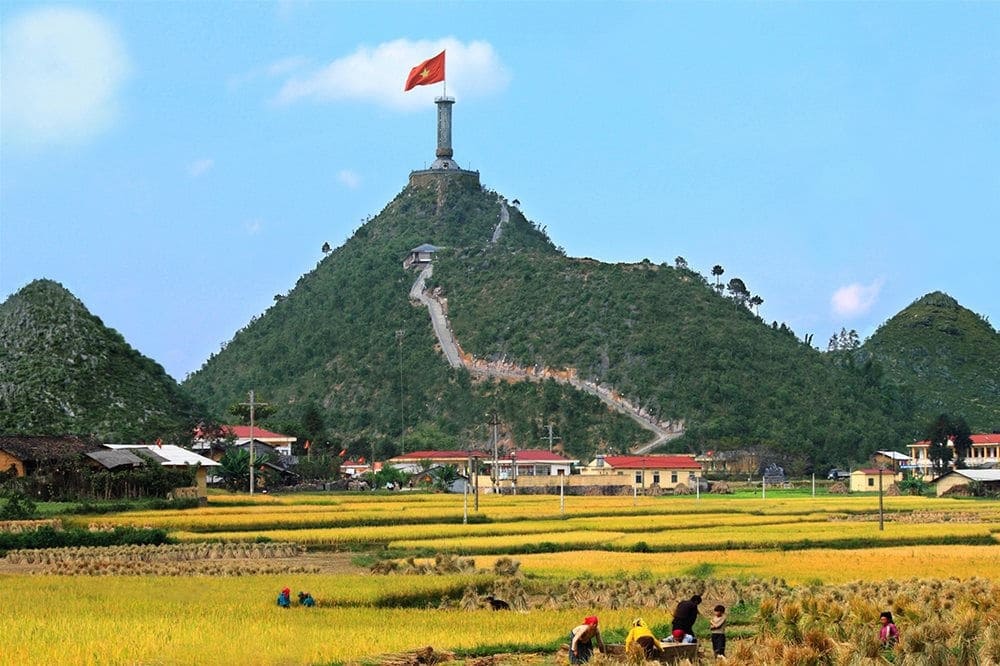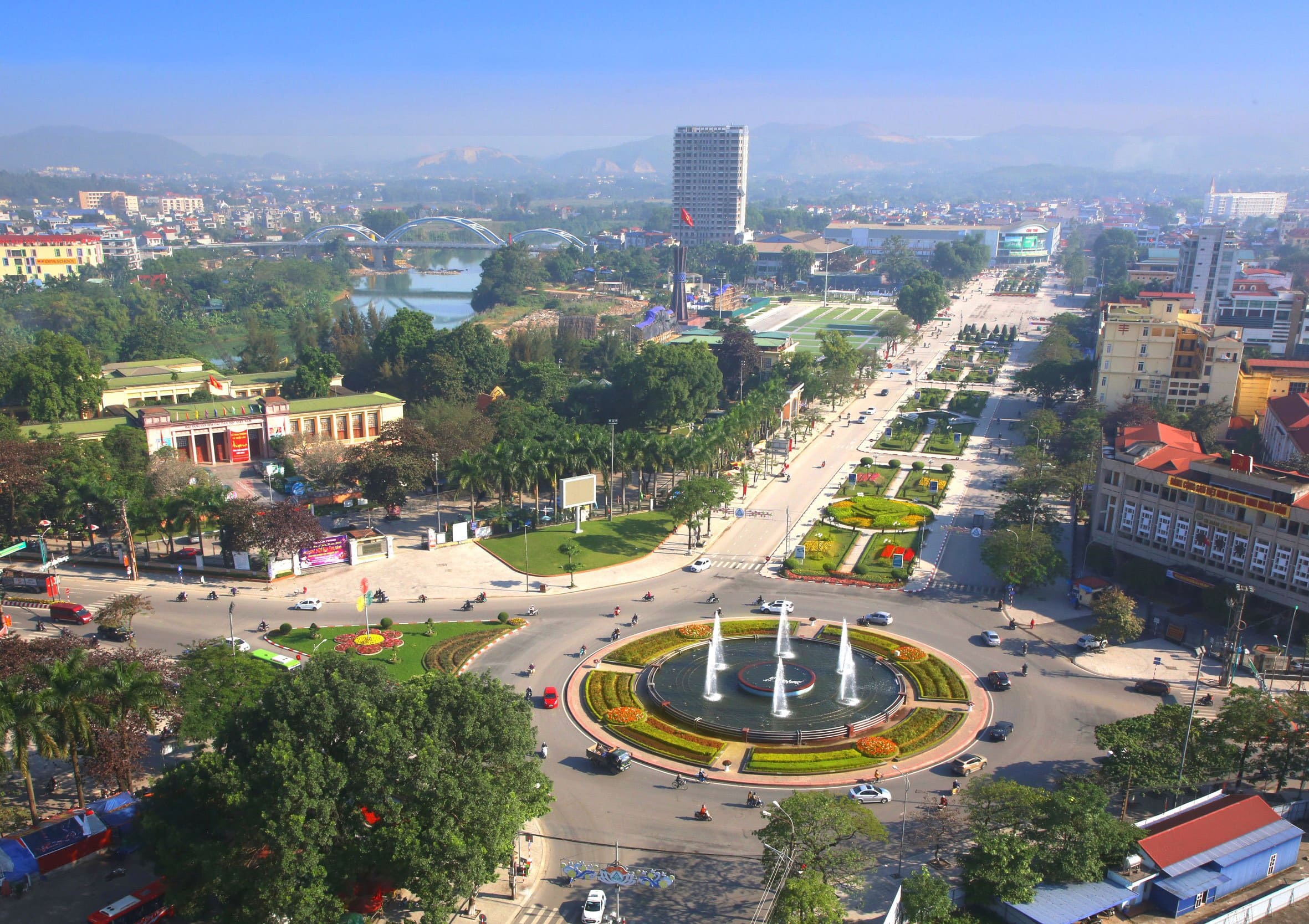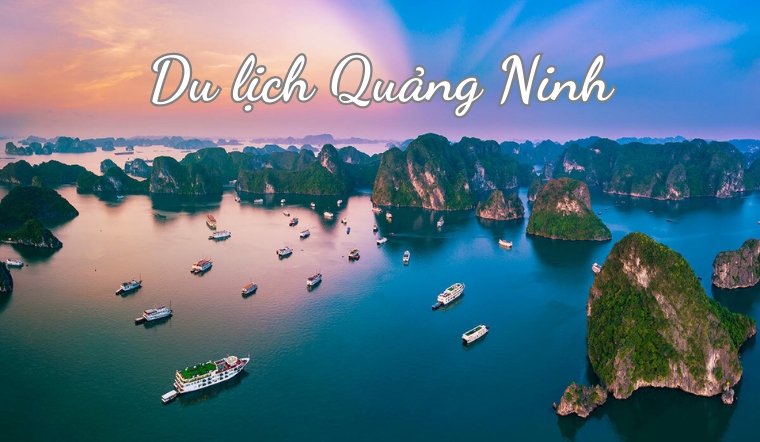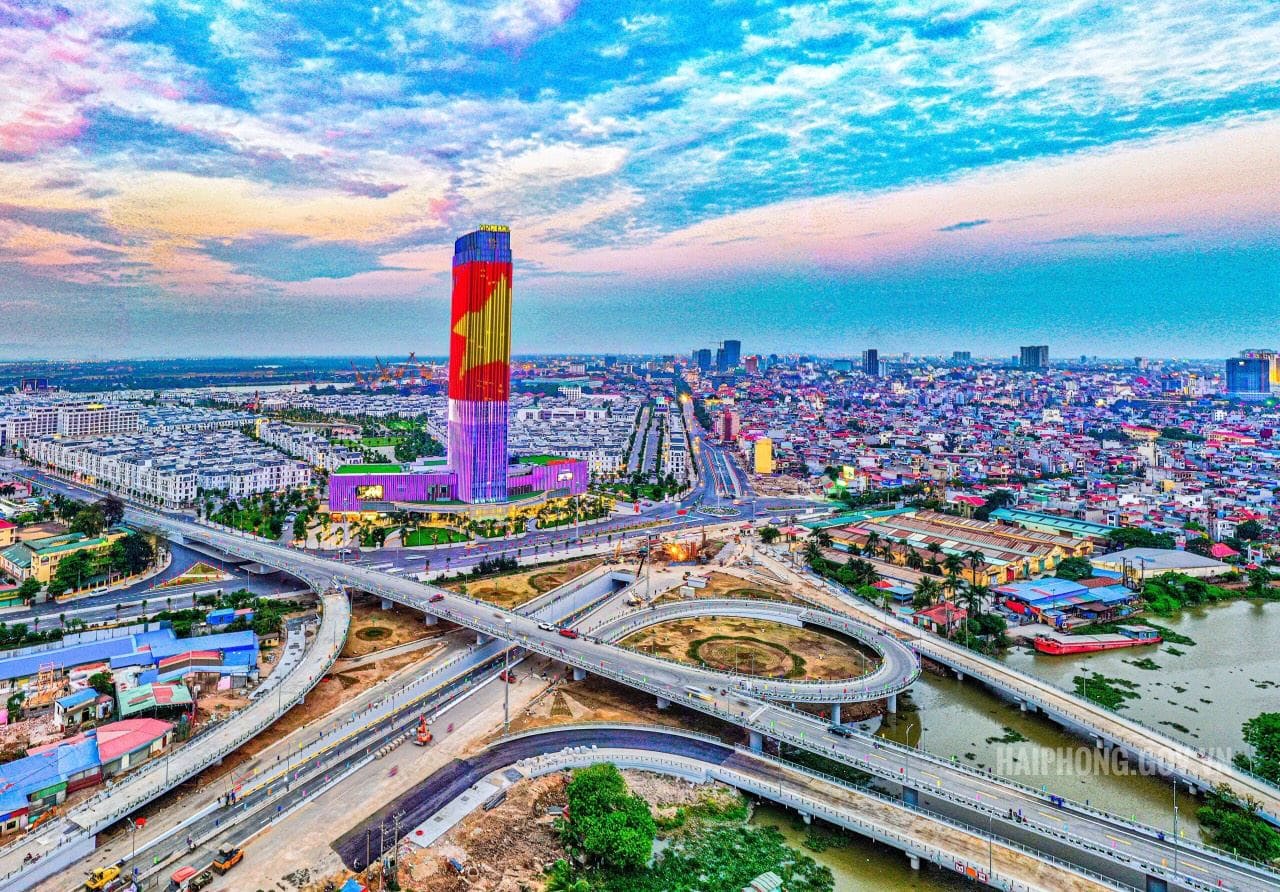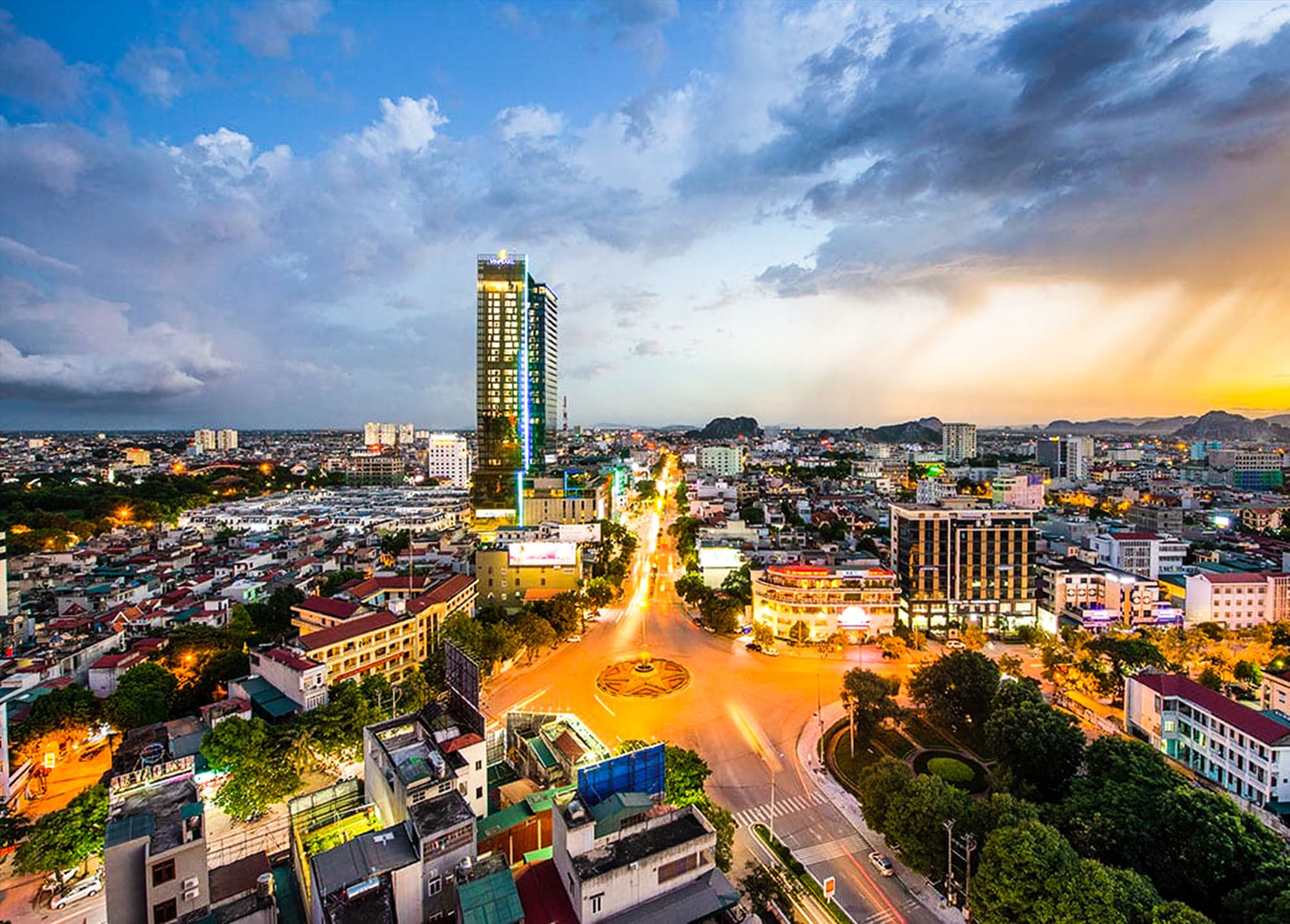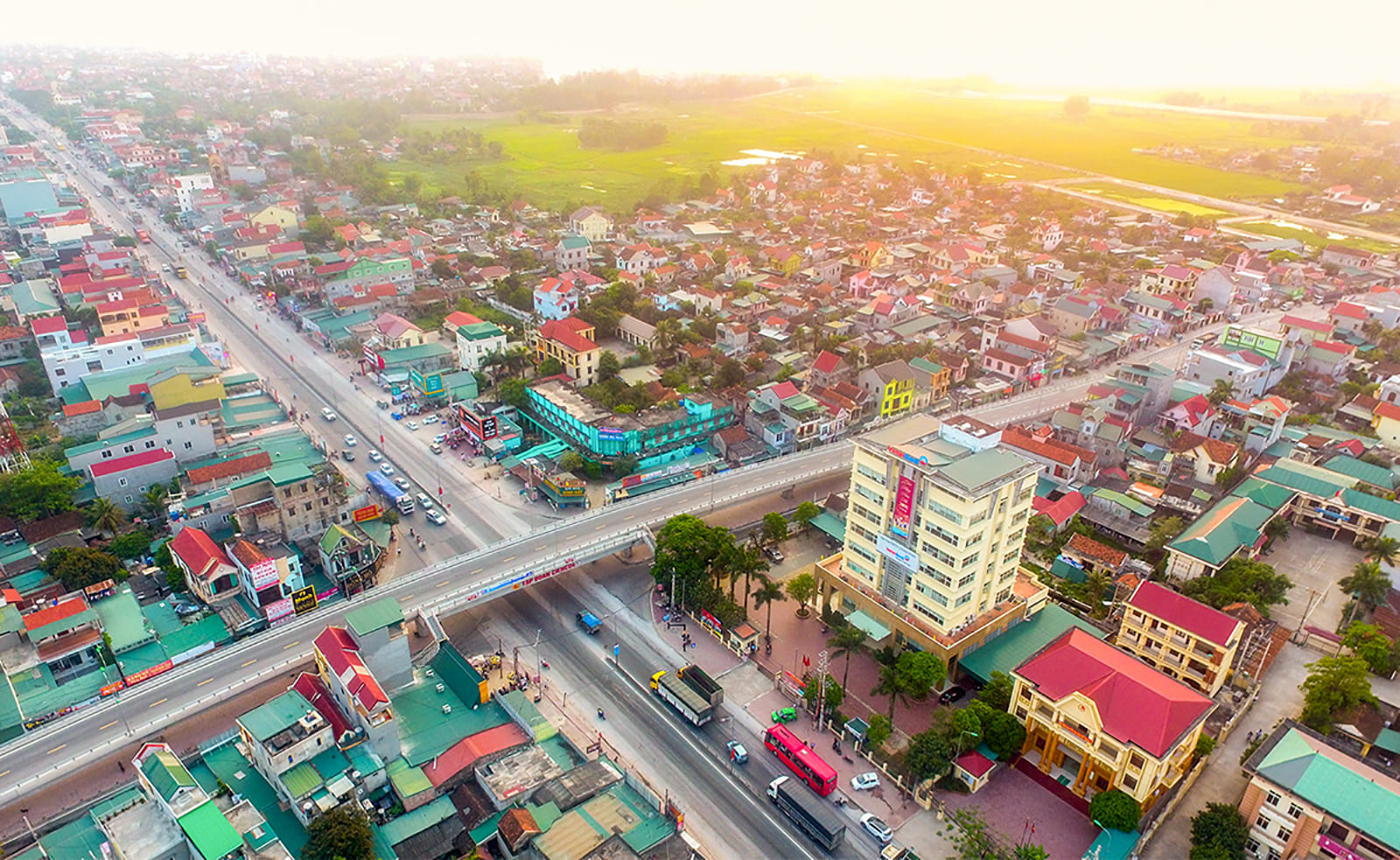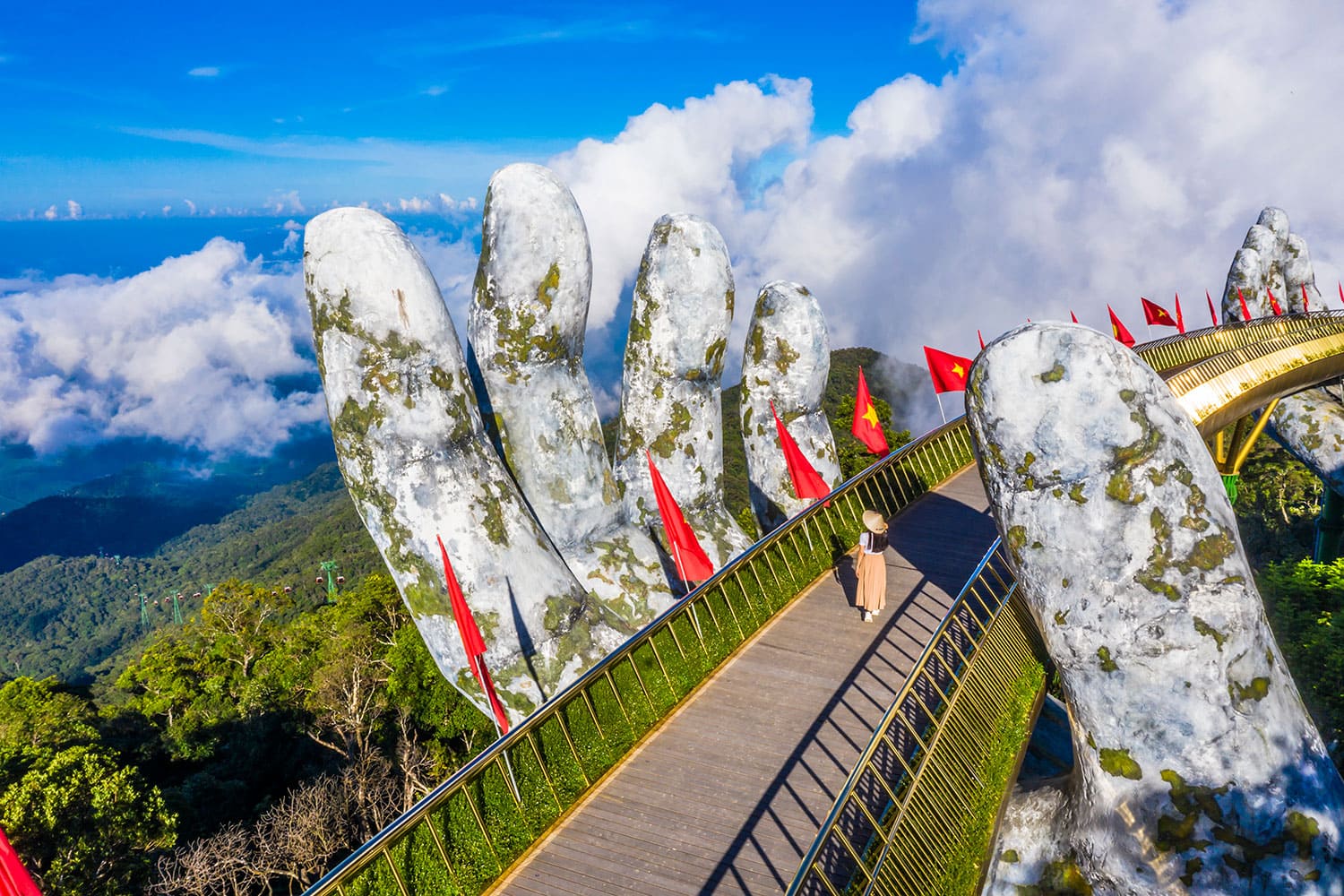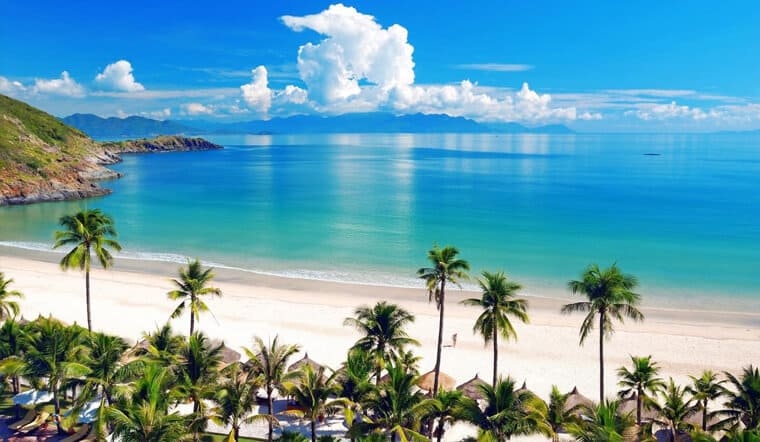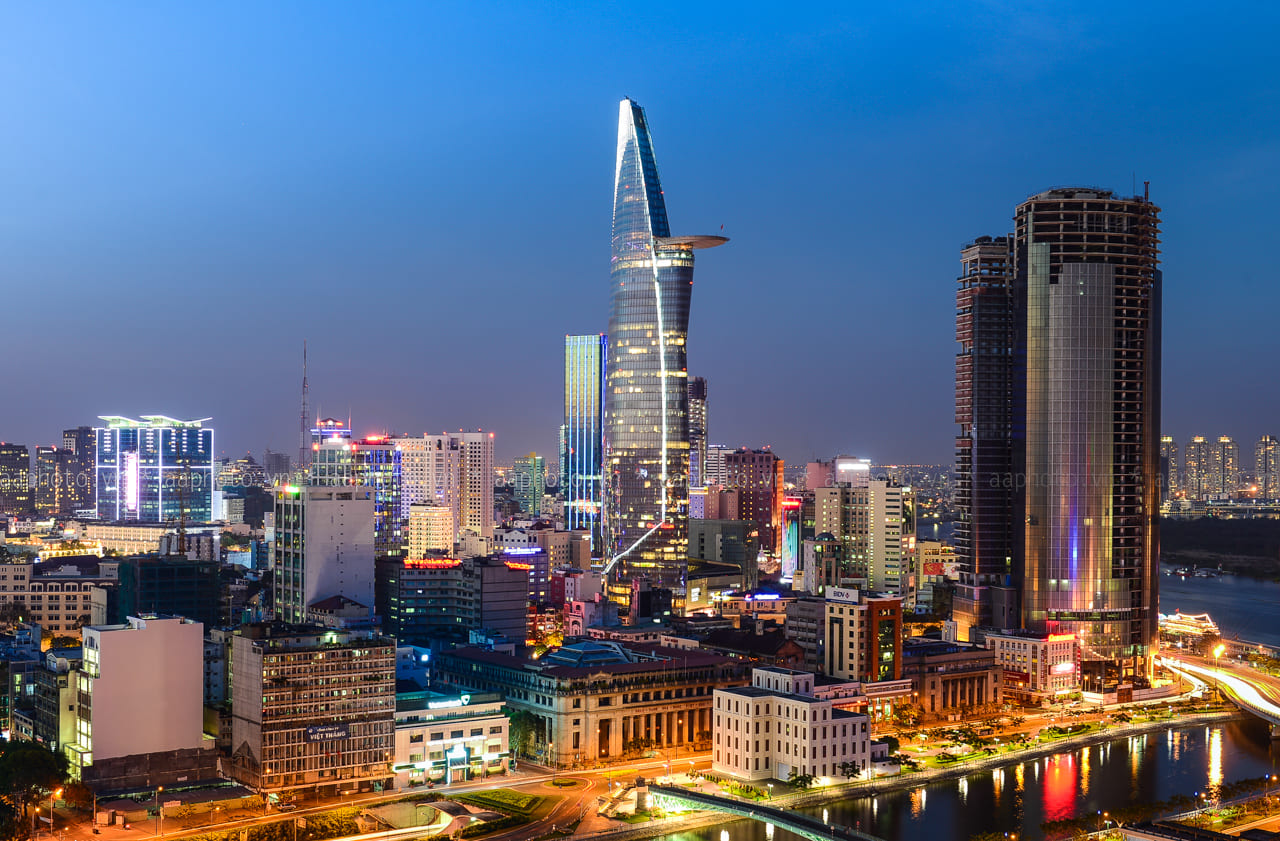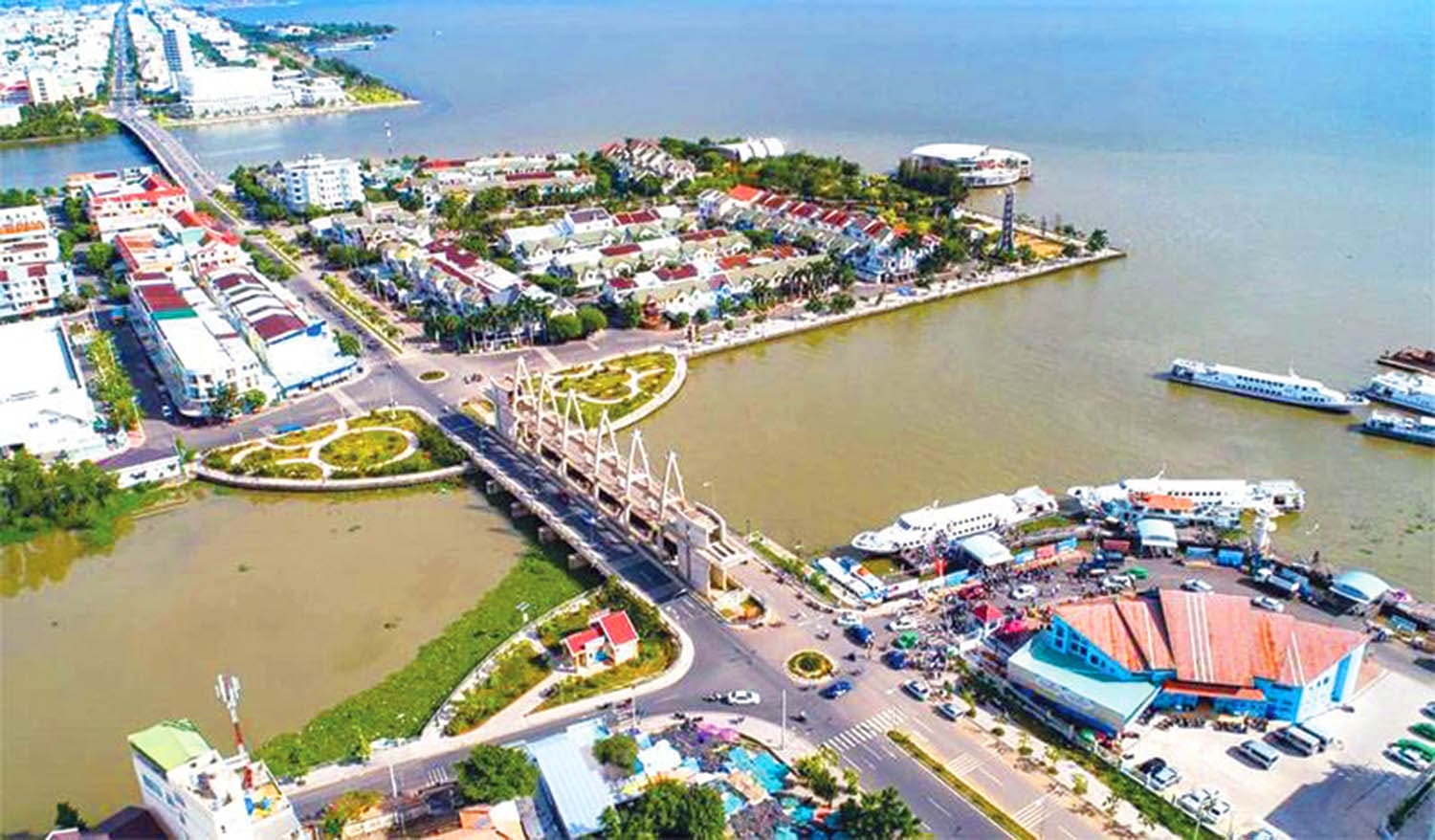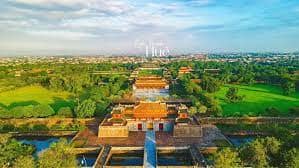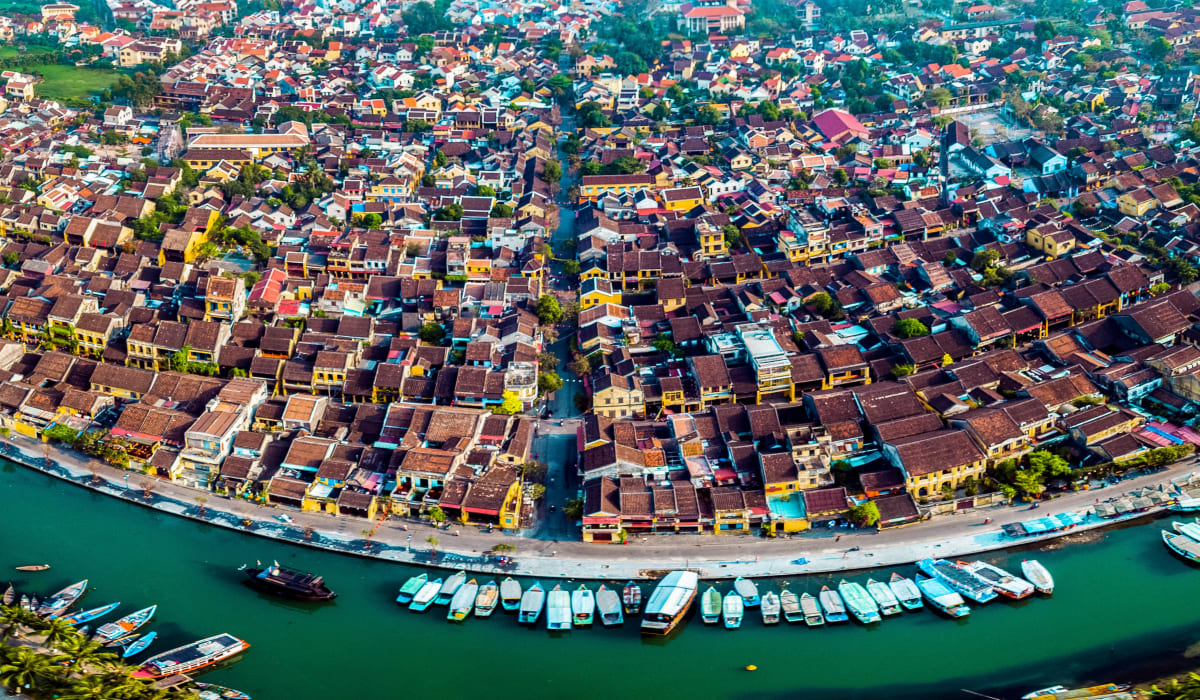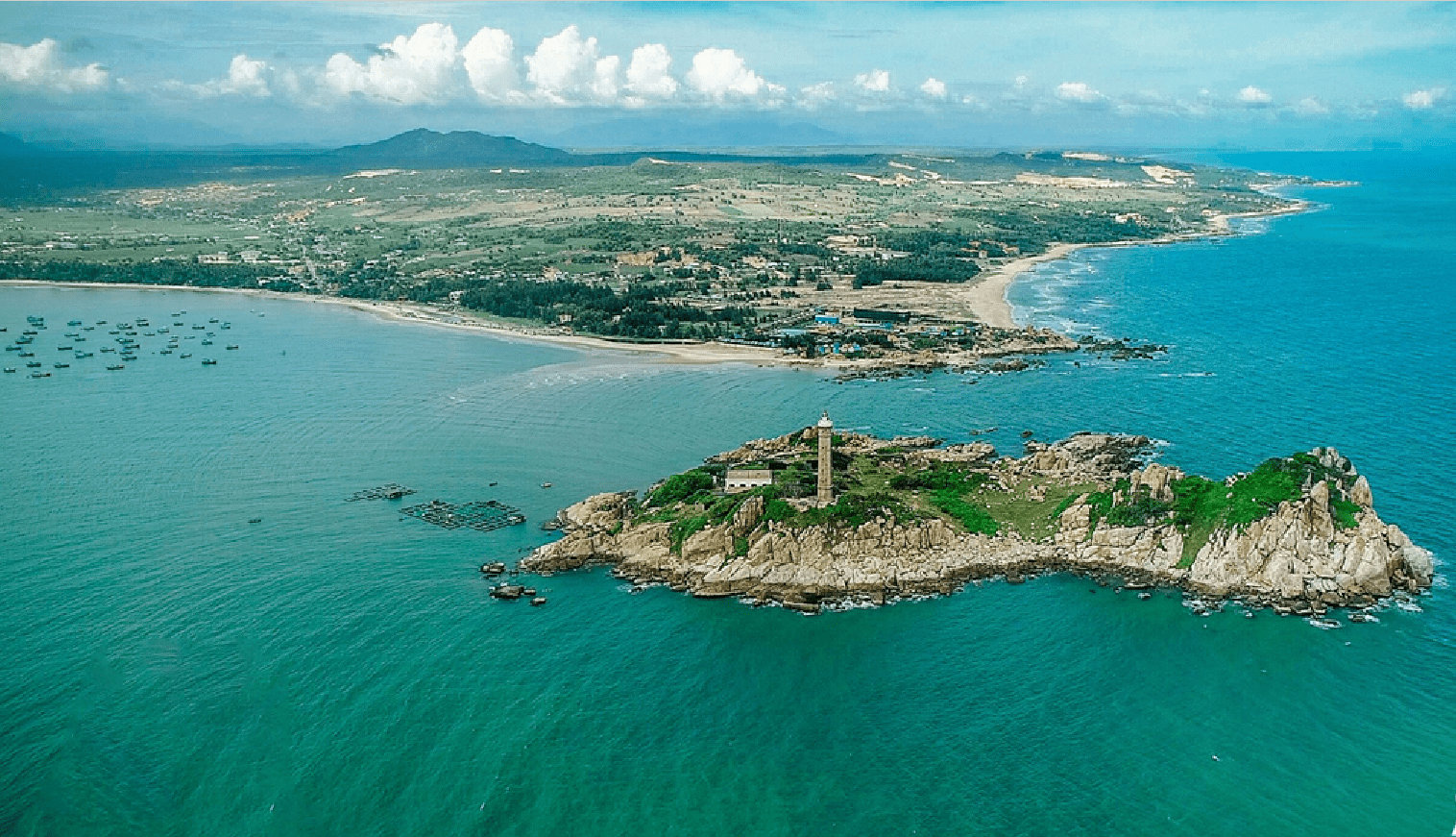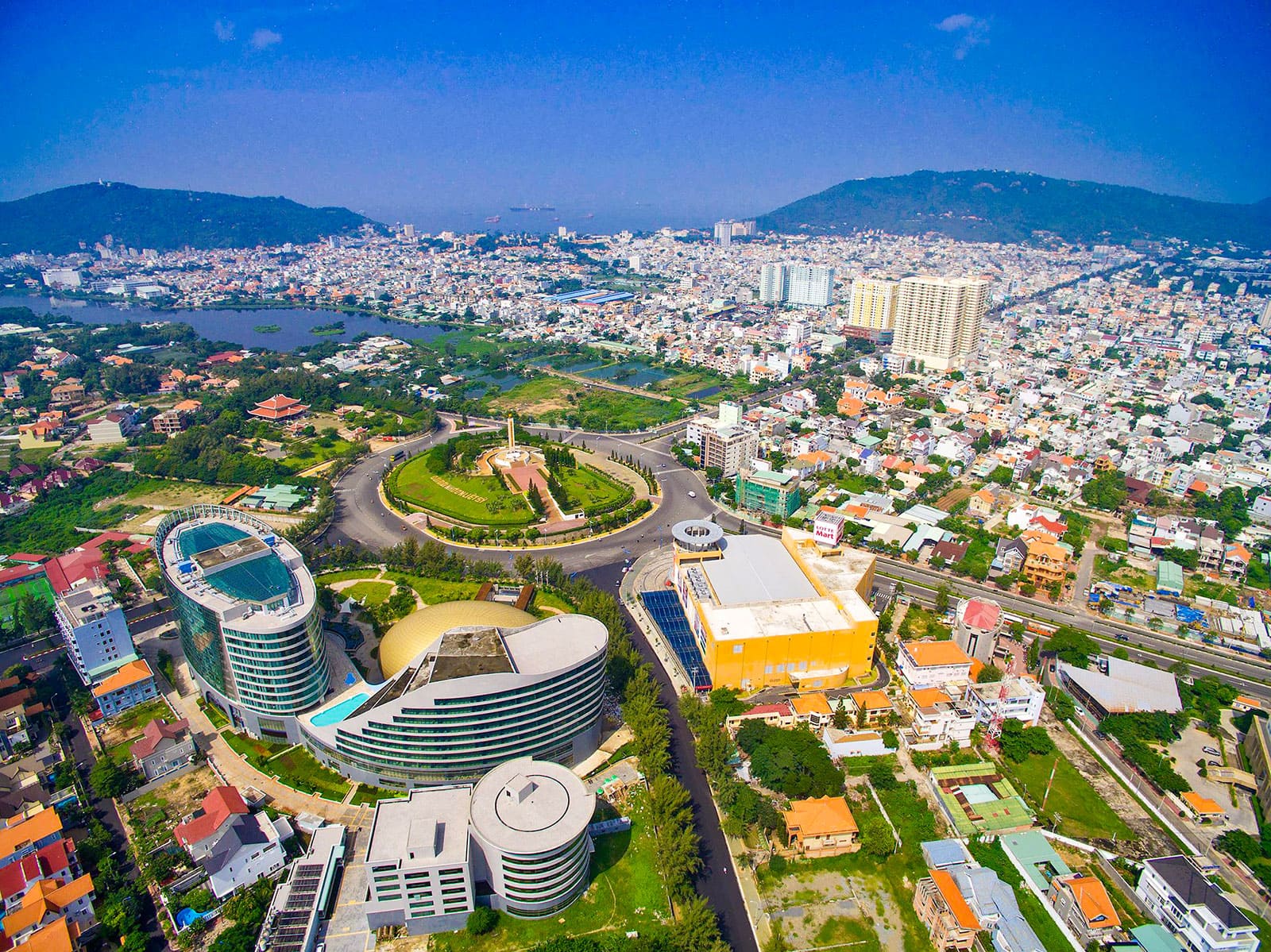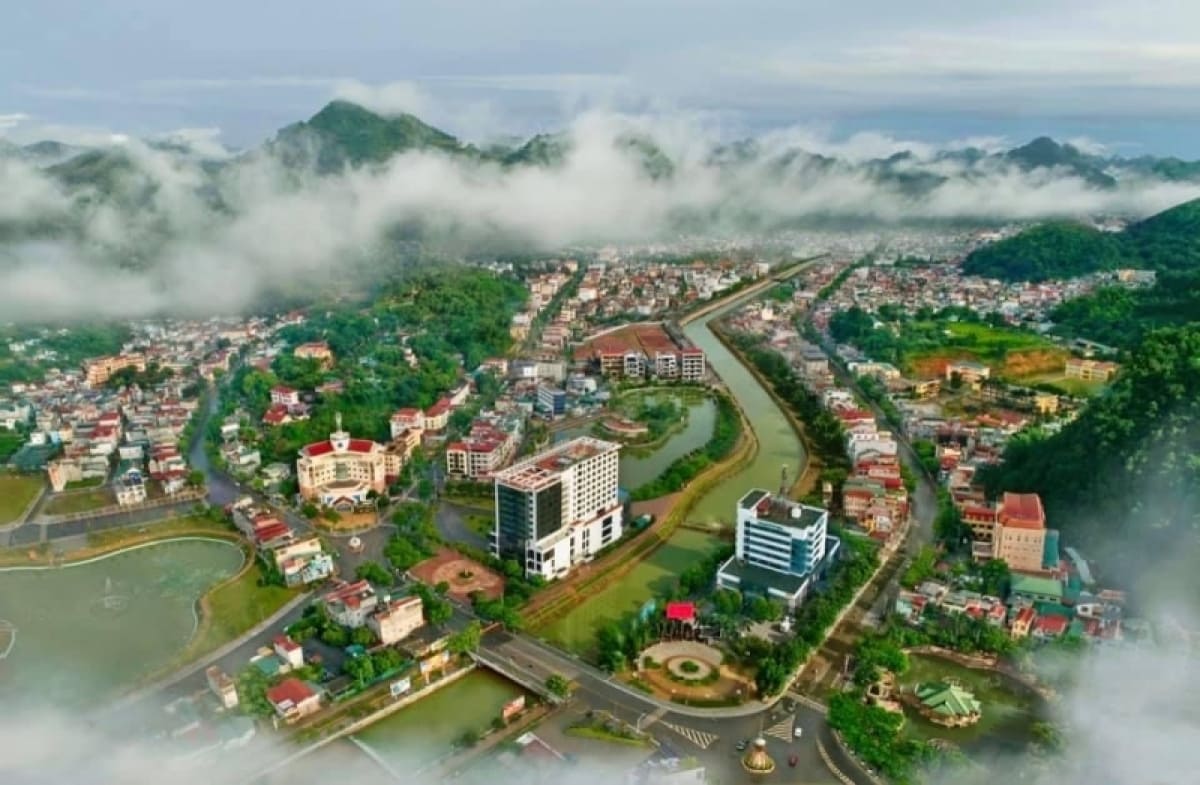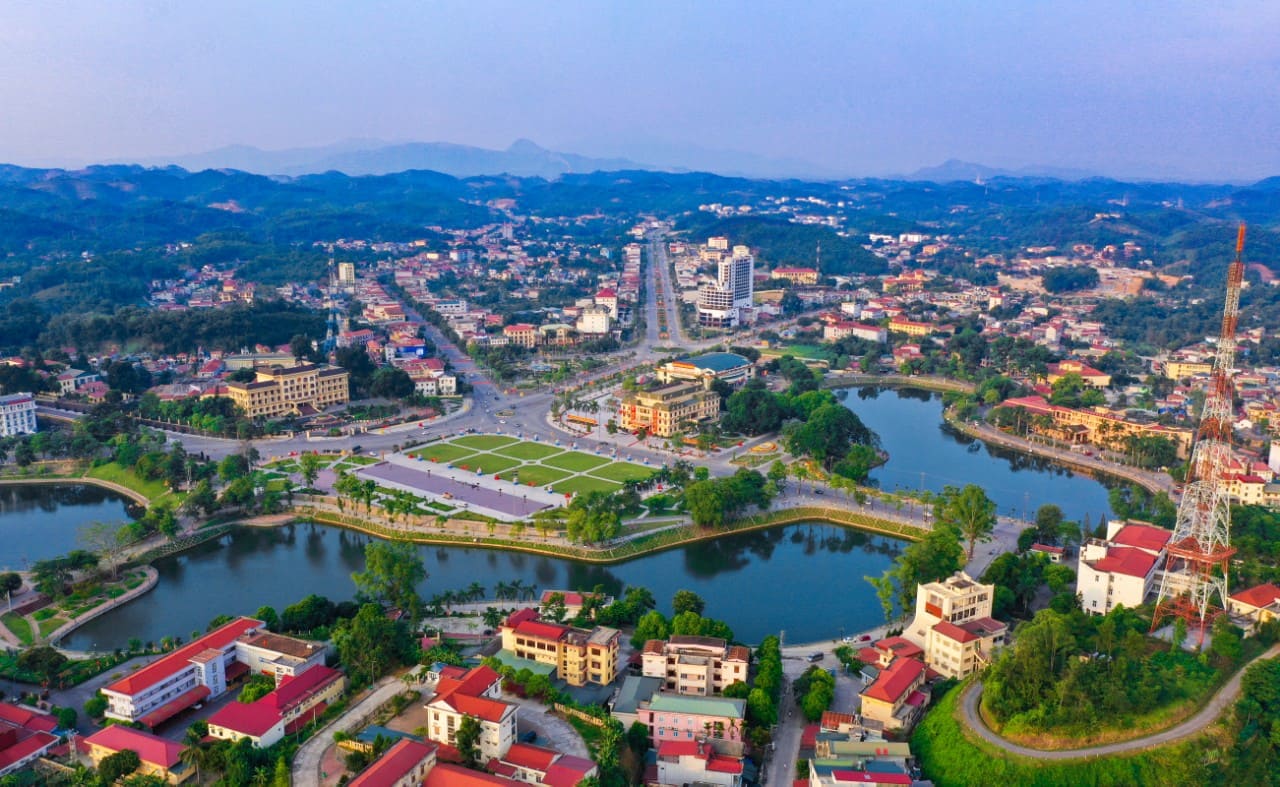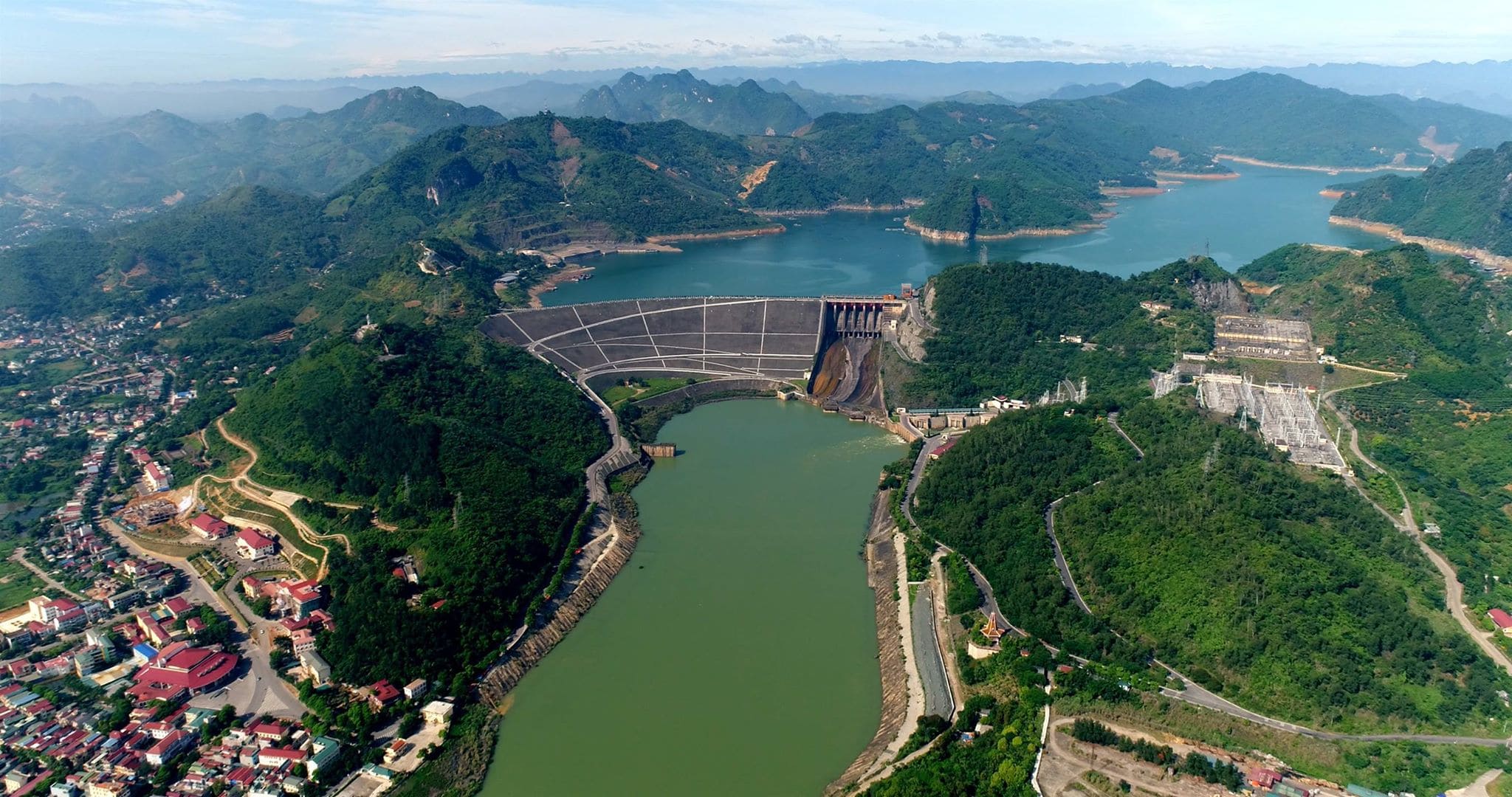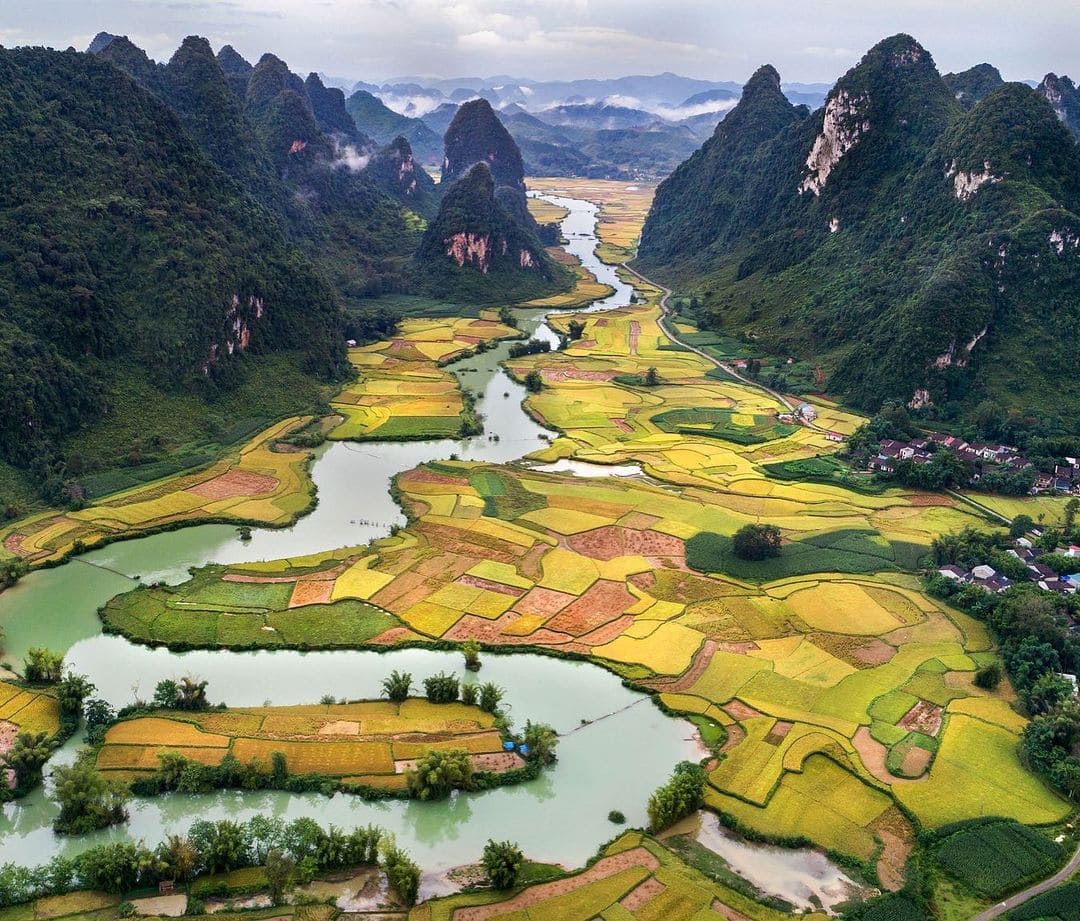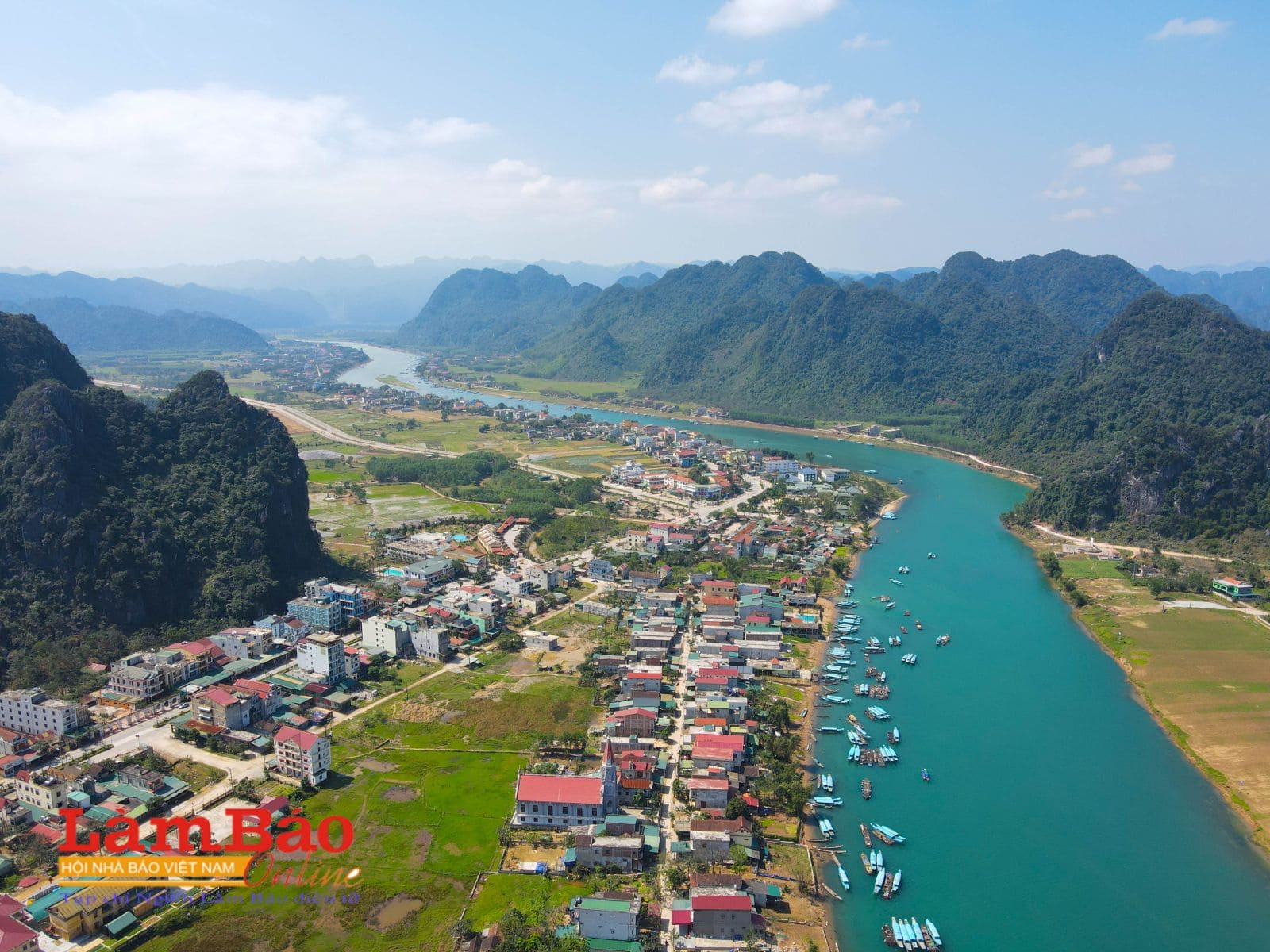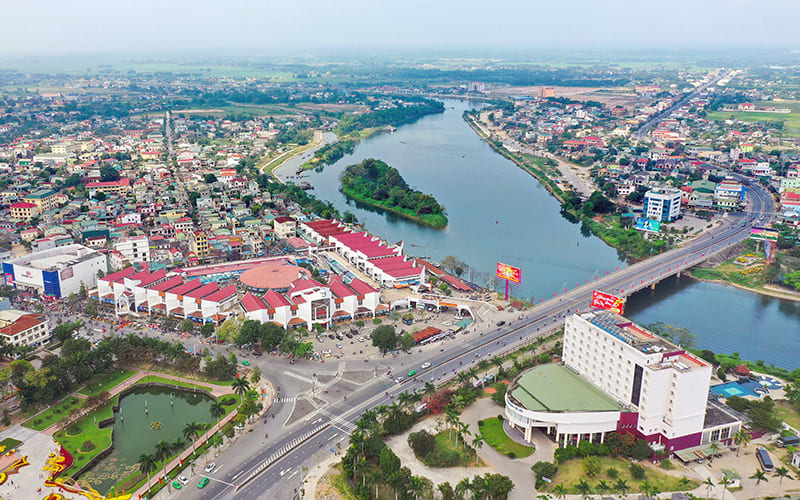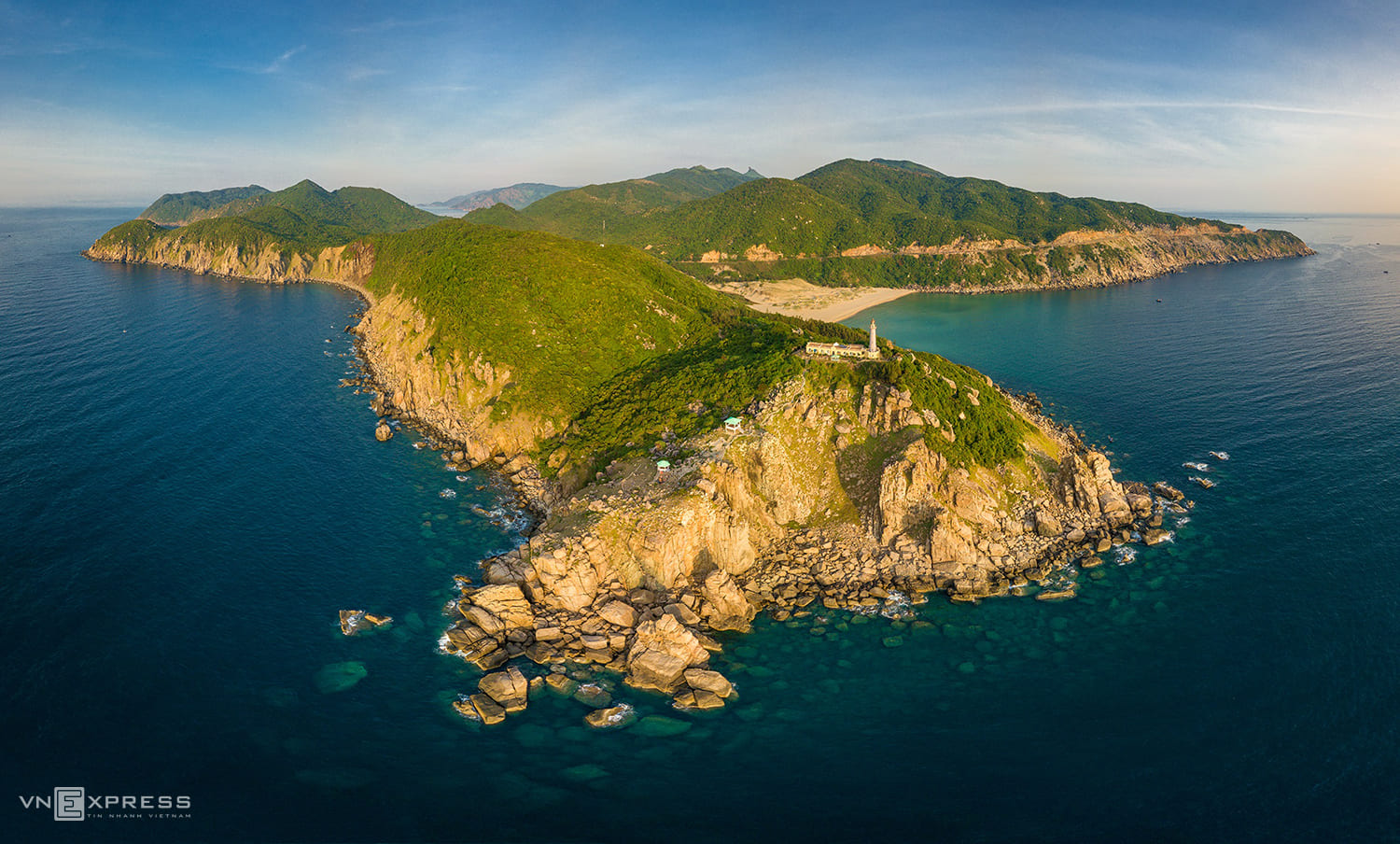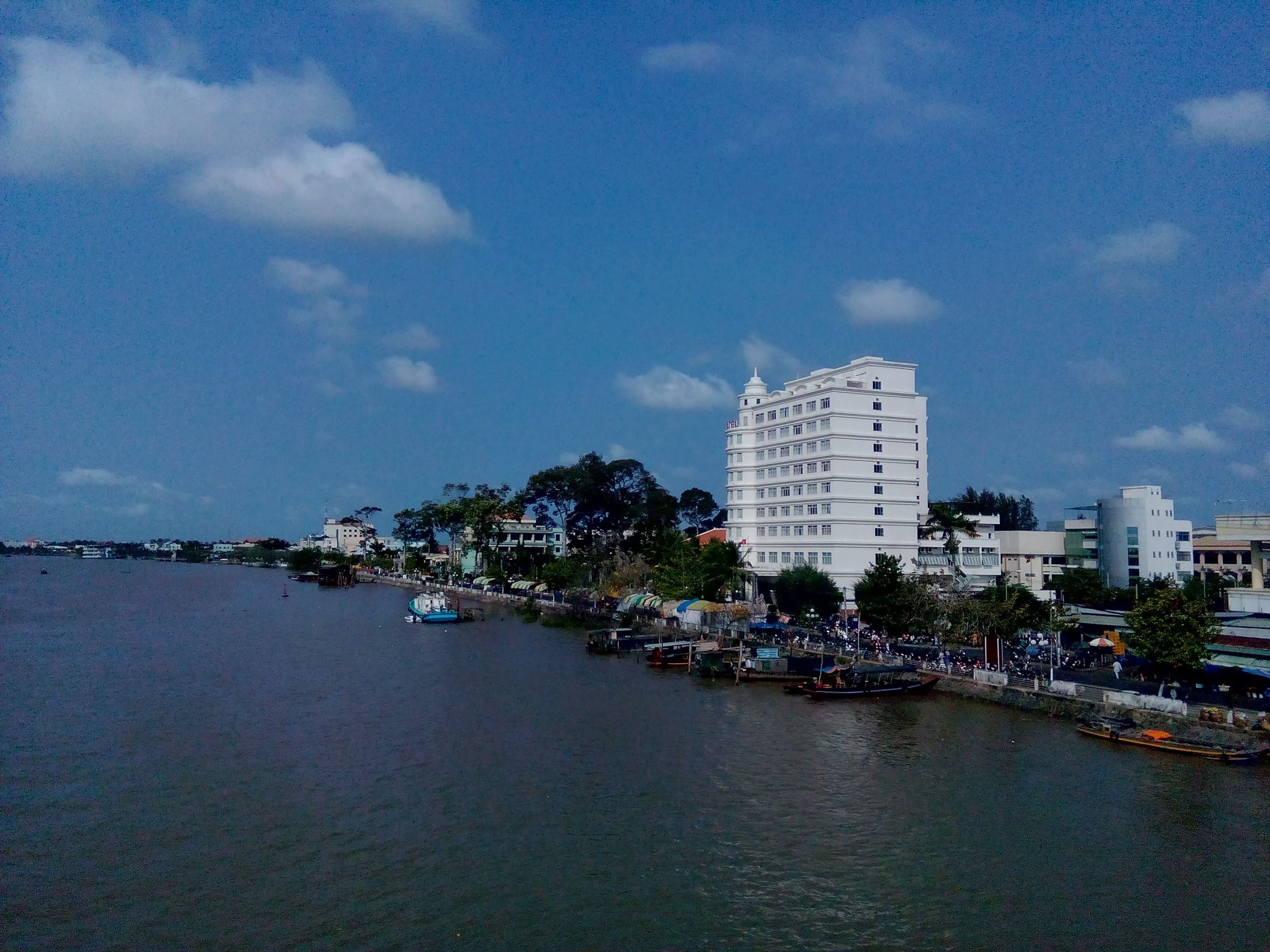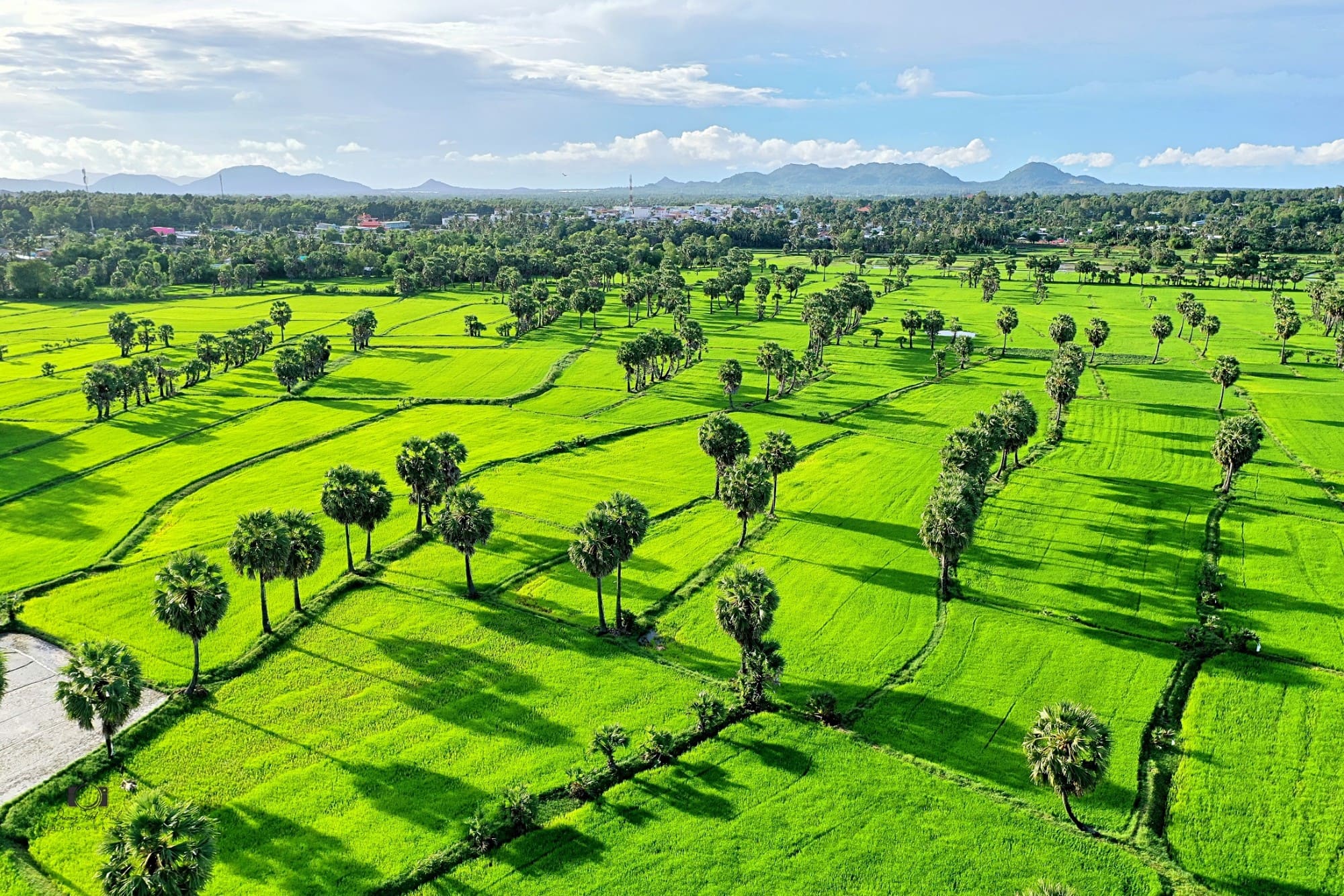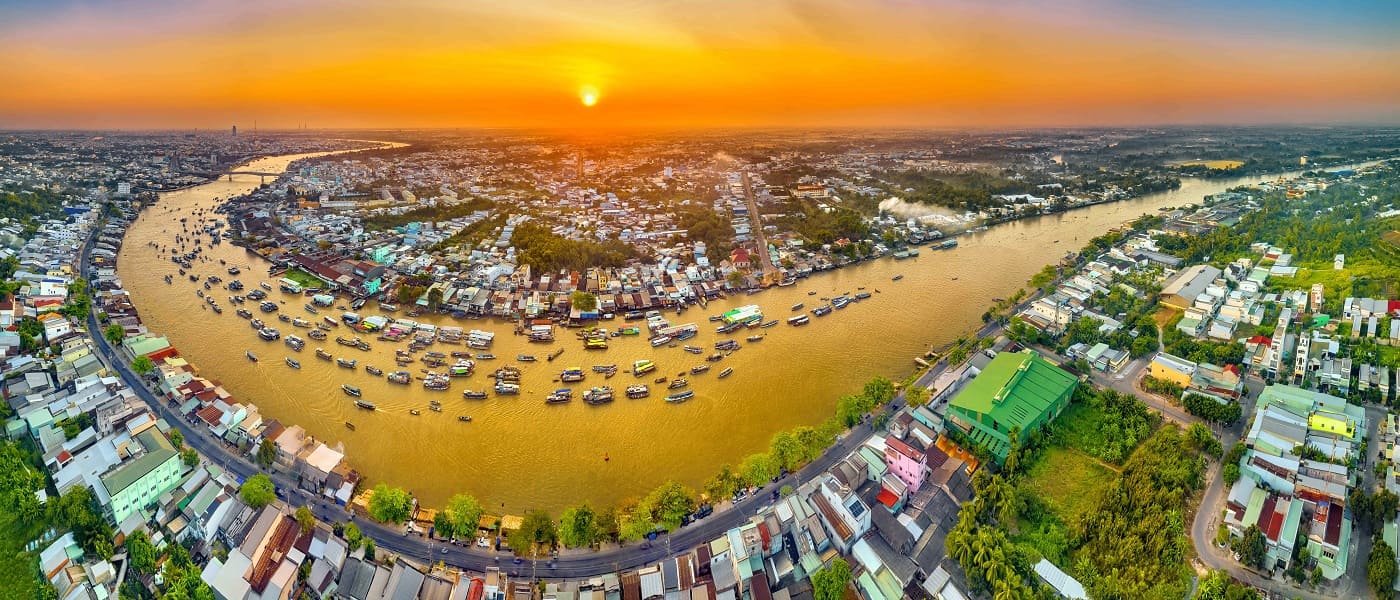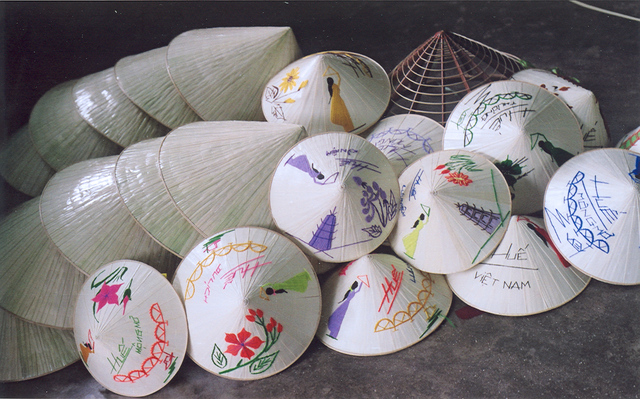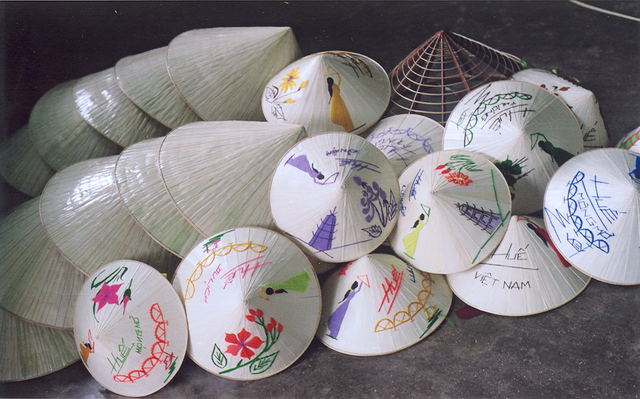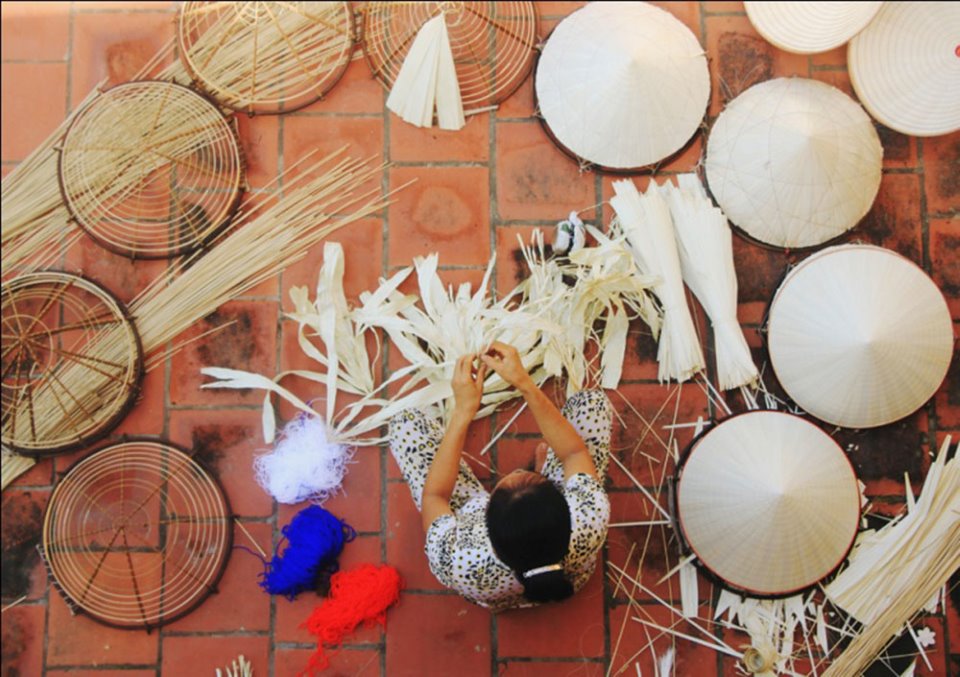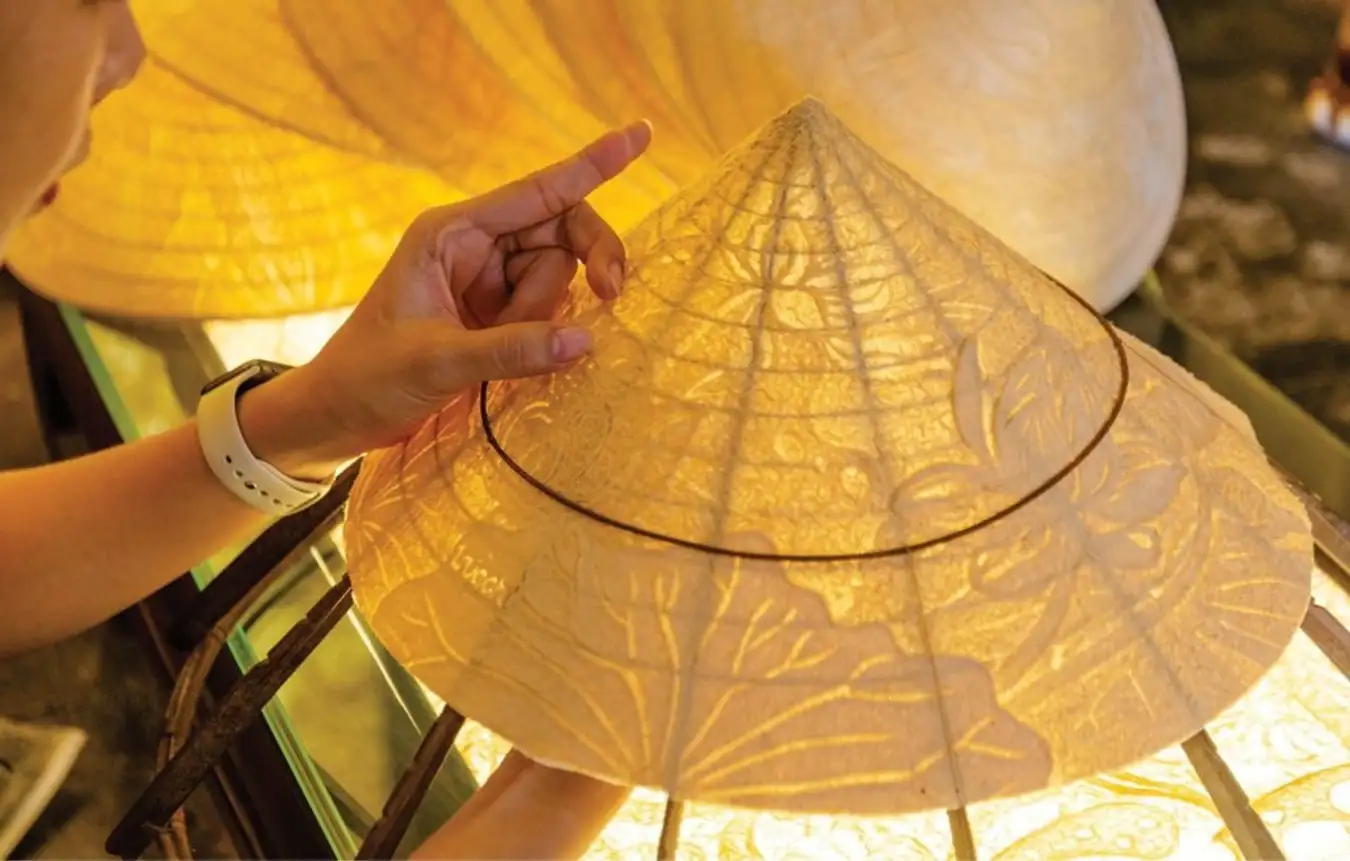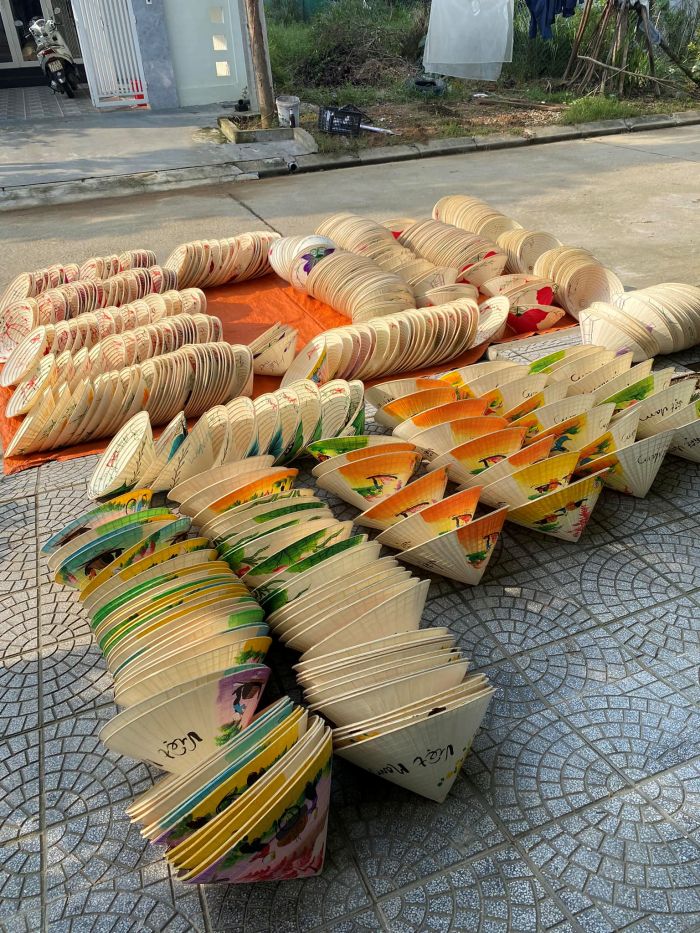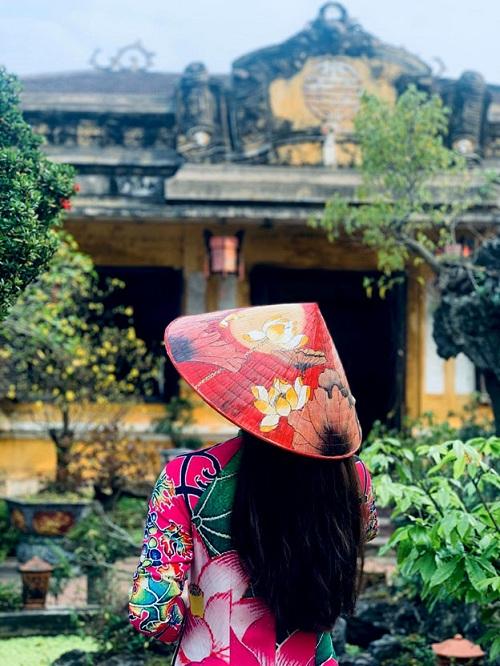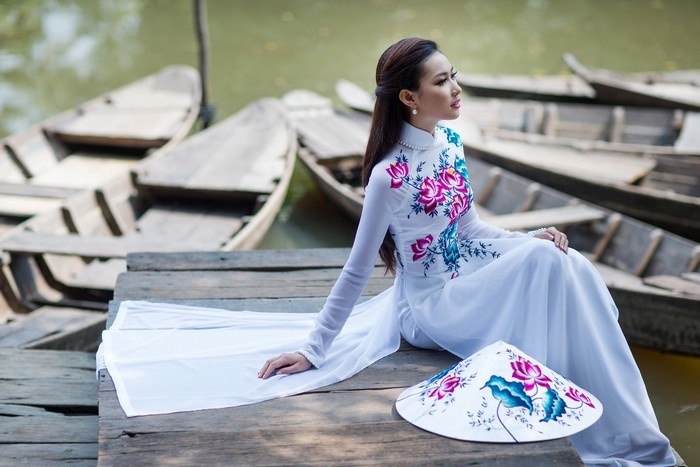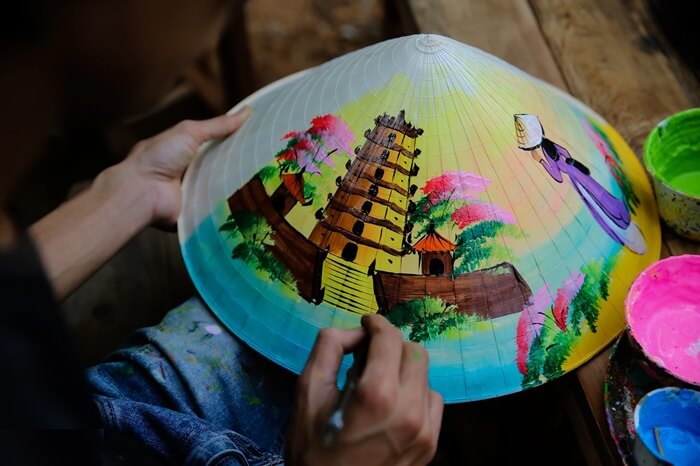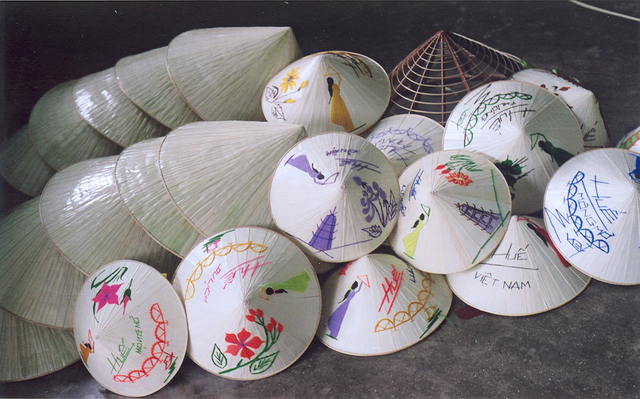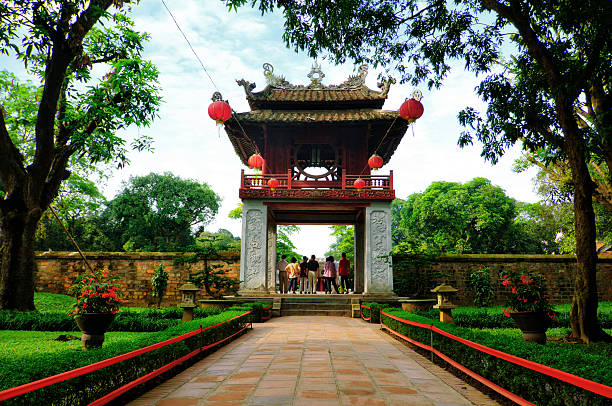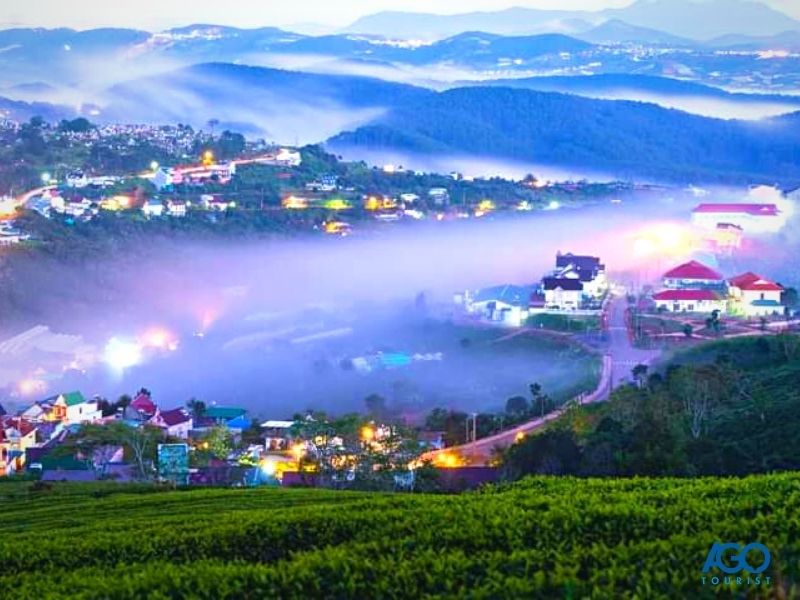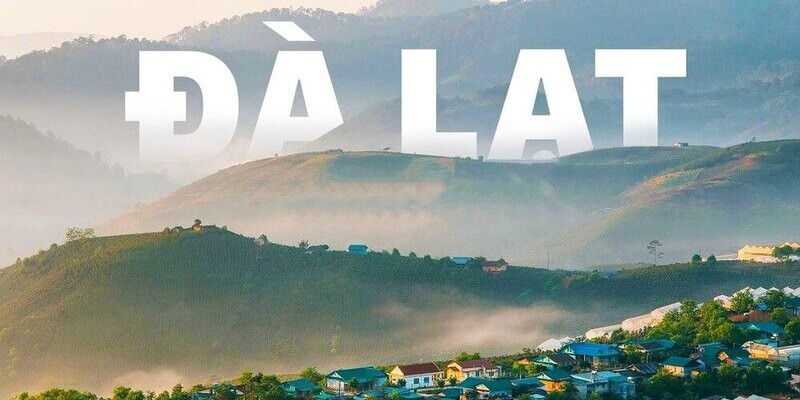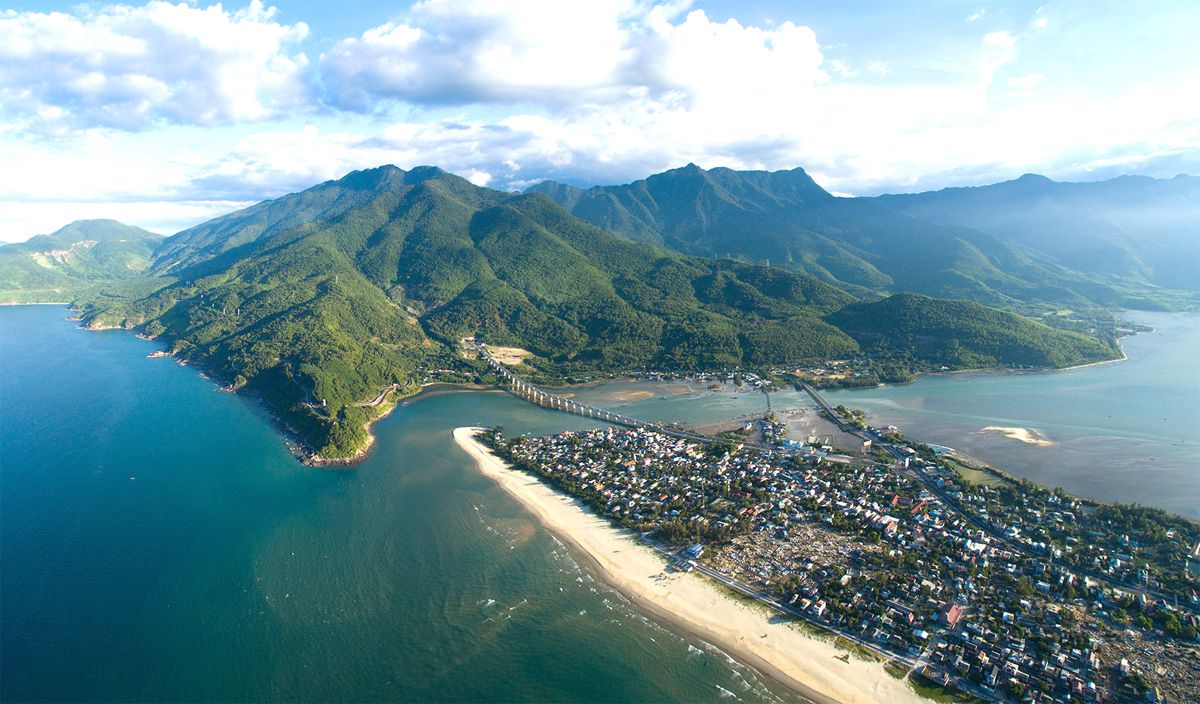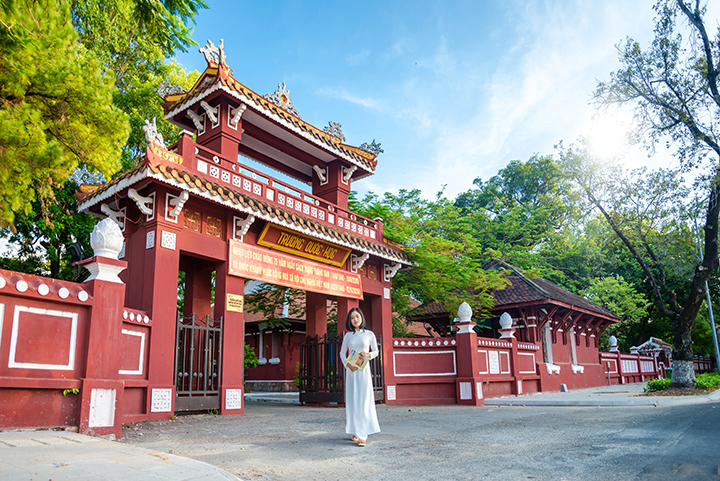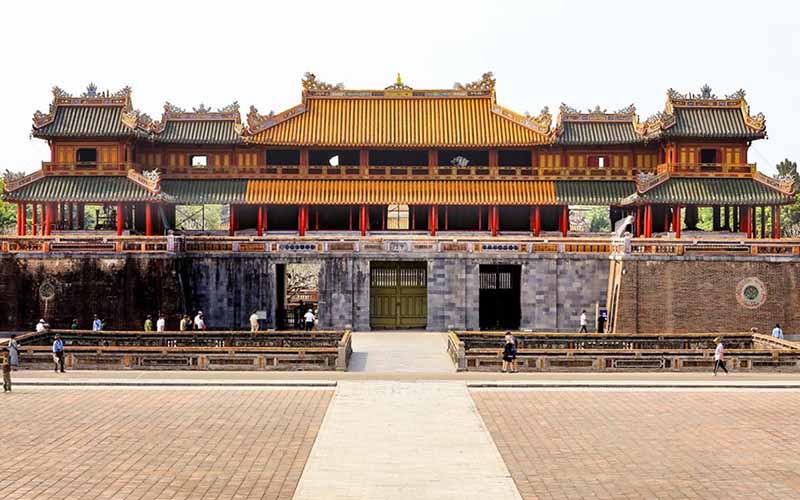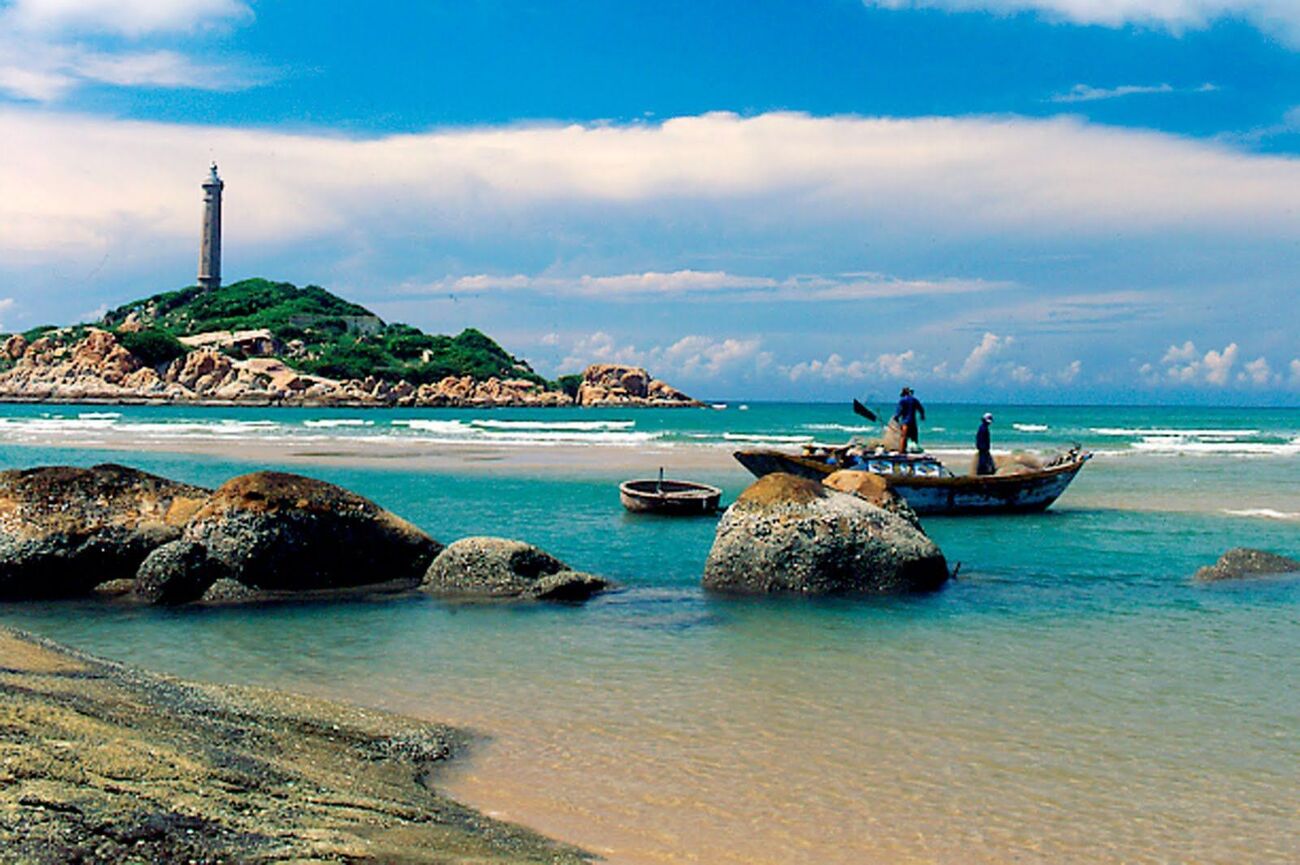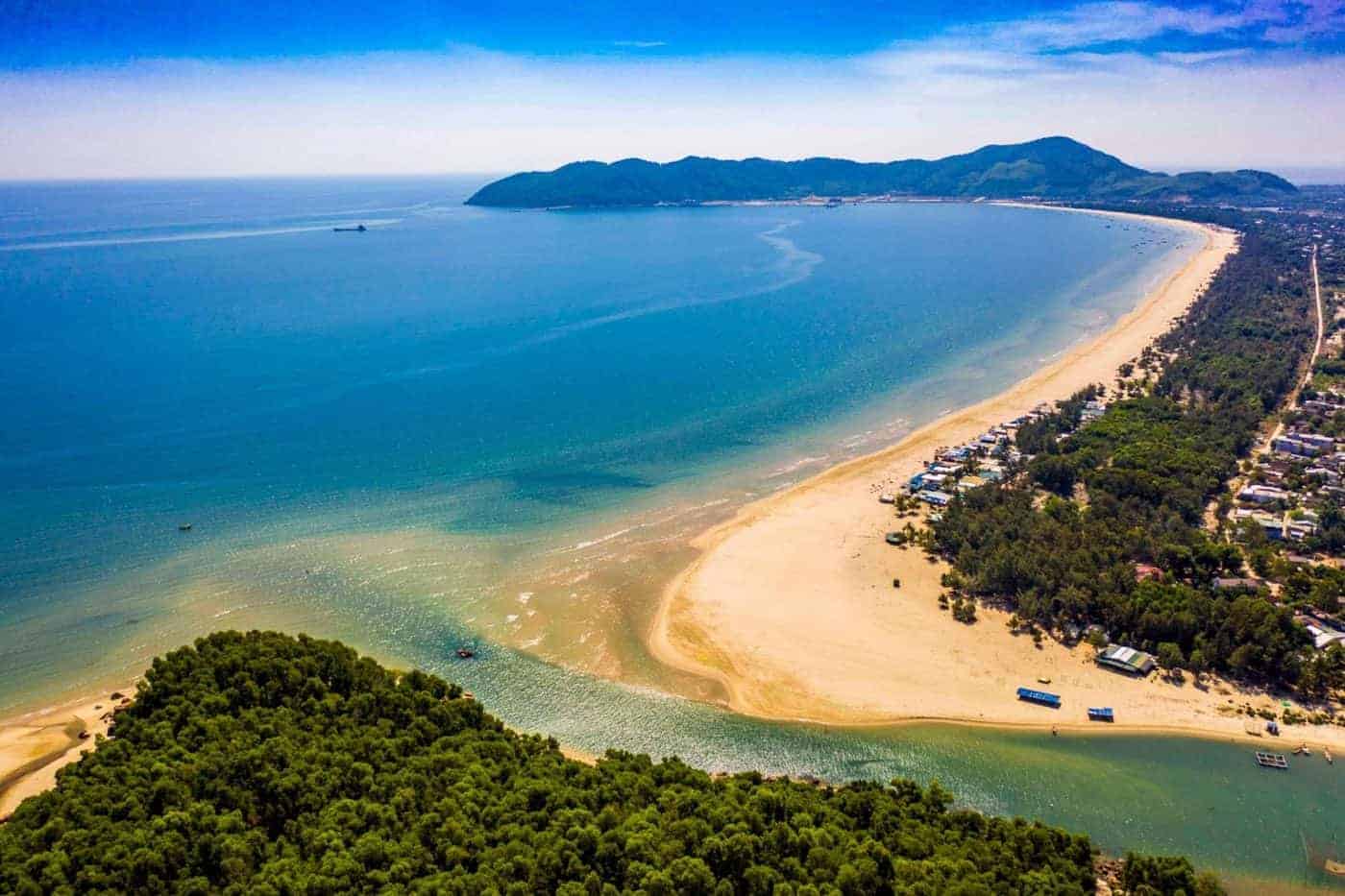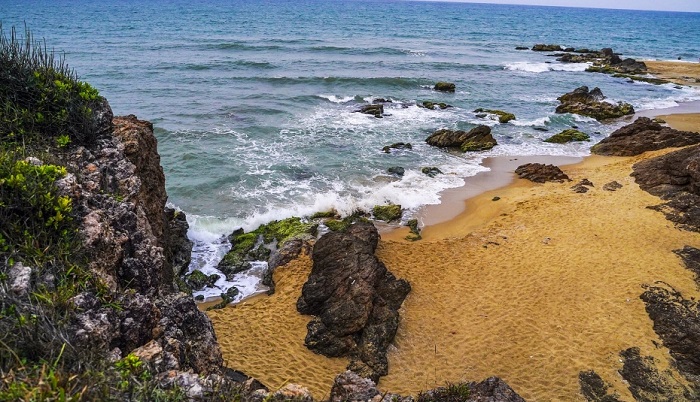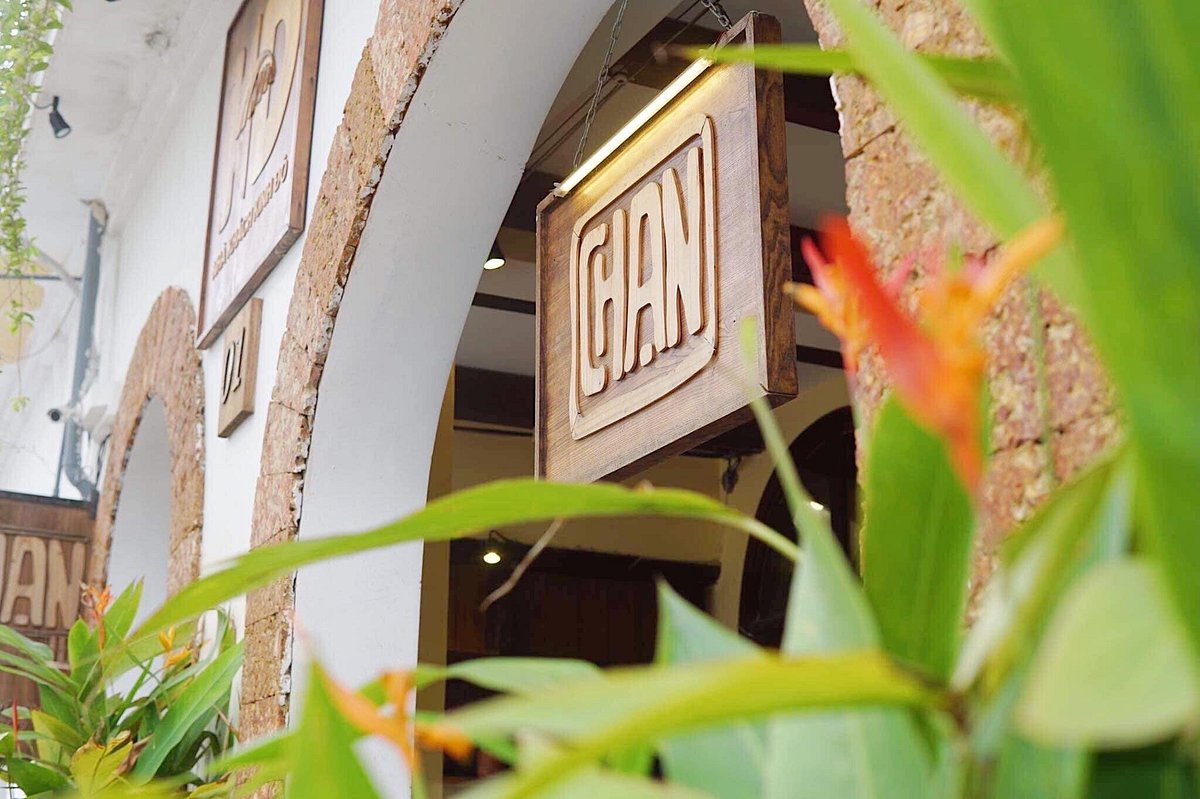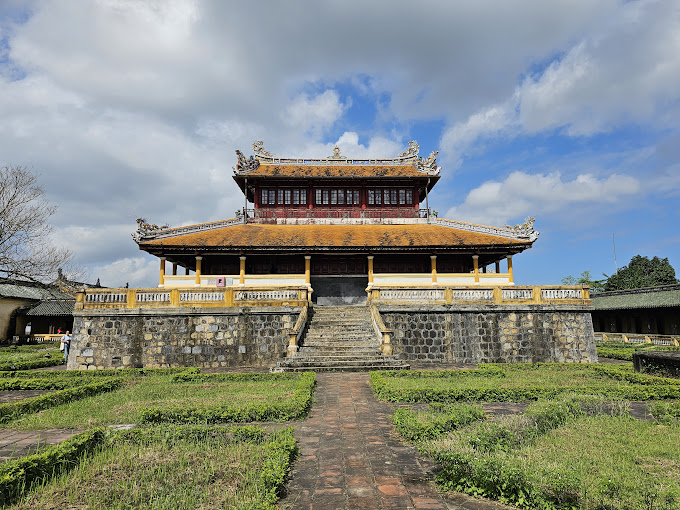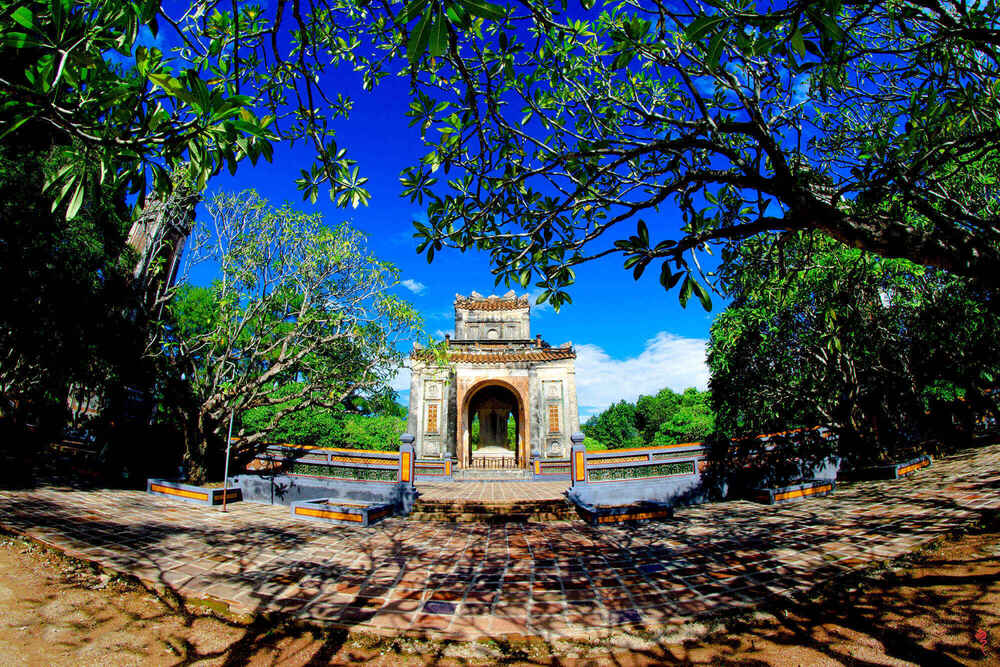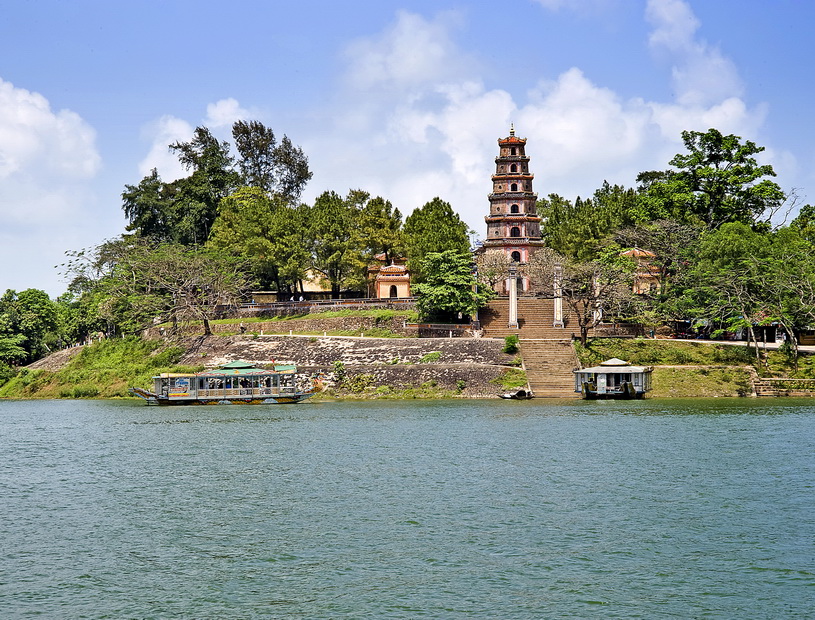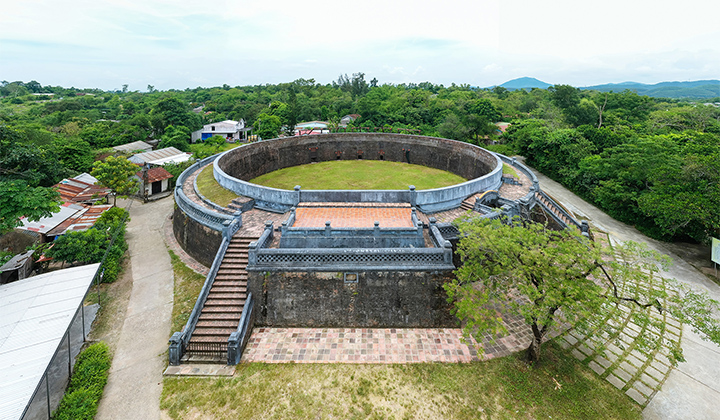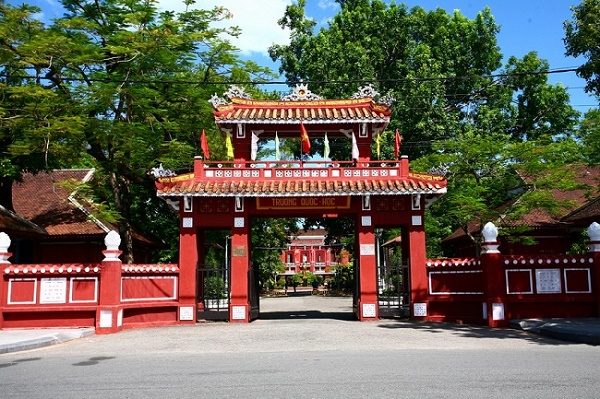Traveling to Hue, it is not difficult for tourists to see images of gentle girls in ao dai with poetic hats, this is considered one of the classic images that depict the beauty of this country and the conical hat village. Phu Cam is one of the places that creates that beauty. As a very famous traditional craft village, Phu Cam attracts many tourists to see firsthand the process of creating famous hats and better understand one of the most elaborate and arduous traditional crafts. of the ancient capital. Phu Cam hat village is currently located on the southern bank of the An Cuu river in Phuoc Vinh ward, downtown Hue city. Therefore, tourists who want to visit this place can move quite conveniently and easily. Along with the historical flow of Hue, Phu Cam conical hat craft village is still preserved and handed down until today as A traditional cultural beauty that makes people proud. Going back in history, Phu Cam hat village was established around the 17th century. Accordingly, at this time, a religious union came to Phu Cam to live, then Langlois, a French priest, was sent to Hue to establish a parish and gather people to follow the religion as well as develop the profession. make traditional hats. Since then, despite many ups and downs, Phu Cam conical hat village has persisted and adorned the beauty of Hue with traditional hats. Although the conical hat looks simple and gentle, creating beautiful and impressive products requires an elaborate and meticulous process with the skillful hands of artisans. In Phu Cam hat village, people use 16 boards of different sizes to make hats. The first step will be sharpening the bamboo, sharpening the rim, and building the frame so that it is round and symmetrical. Whether a hat's shape is beautiful or not depends on the hat's frame, so artisans must maintain the technique of shaping the roof, the distance between the stripes and the roundness of the brim must be standard. After the frame, the hat leaf is also made very carefully. People will choose green-white leaves. The leaves need to be old enough so that a hat only has to use 8 to 9 leaves. Once the leaves have been selected at the right age, hat makers in Phu Cam village need to carry out a very complicated incubation and drying step until the leaves are dry but still bright and smooth, not darkened or yellow. The leaves that have been selected and dried will be ironed on a cast iron pan, then use a piece of cloth soaked in cone oil to smooth the leaves to make them smooth and eye-catching. The last step in the hat making process at Phu Cam hat village in Hue is the hat making step. The artisans must be very skillful and delicate to carefully and meticulously attach the transparent threads on the leaves to the brim of the hat. Hidden between the two layers of leaves of the hat will be floral motifs typical of Hue such as Perfume River, Ngu Mountain, Linh Mo Pagoda, Citadel, Truong Tien Bridge or poetry and fishing verses about Hue. Under the sunlight, patterns, images and poetry appear clearly on the brim of the hat like a painting. Phu Cam's hat strap is also an art, sometimes it will be a white silk brocade, or pure black brocade, other times it will be shy purple silk, willow green, hot pink or moonlight blue. Each color represents a unique soul, adding to the beauty of the beautiful hats. Through the hats of Phu Cam village, the beauty of Hue appears both gentle and close. The hats of the craft village are not simply handmade products serving life and tourism, but are also filled with love and pride of the people of the ancient capital through each brim, fully portraying the beauty of the ancient capital. gentle, ancient but elegant capital. Phu Cam hat village with traditional conical hats showing the gentle beauty of the people of Hue is not only a handicraft village typical of Hue culture but also a Attractive tourist attractions for tourists from near and far, if any If you have the opportunity to come to Hue, don't miss this attractive destination.
Hue 1104 view From March to August
Ngày cập nhật : 01/12/2024


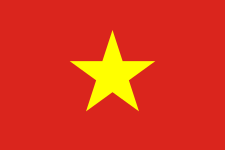 vn
vn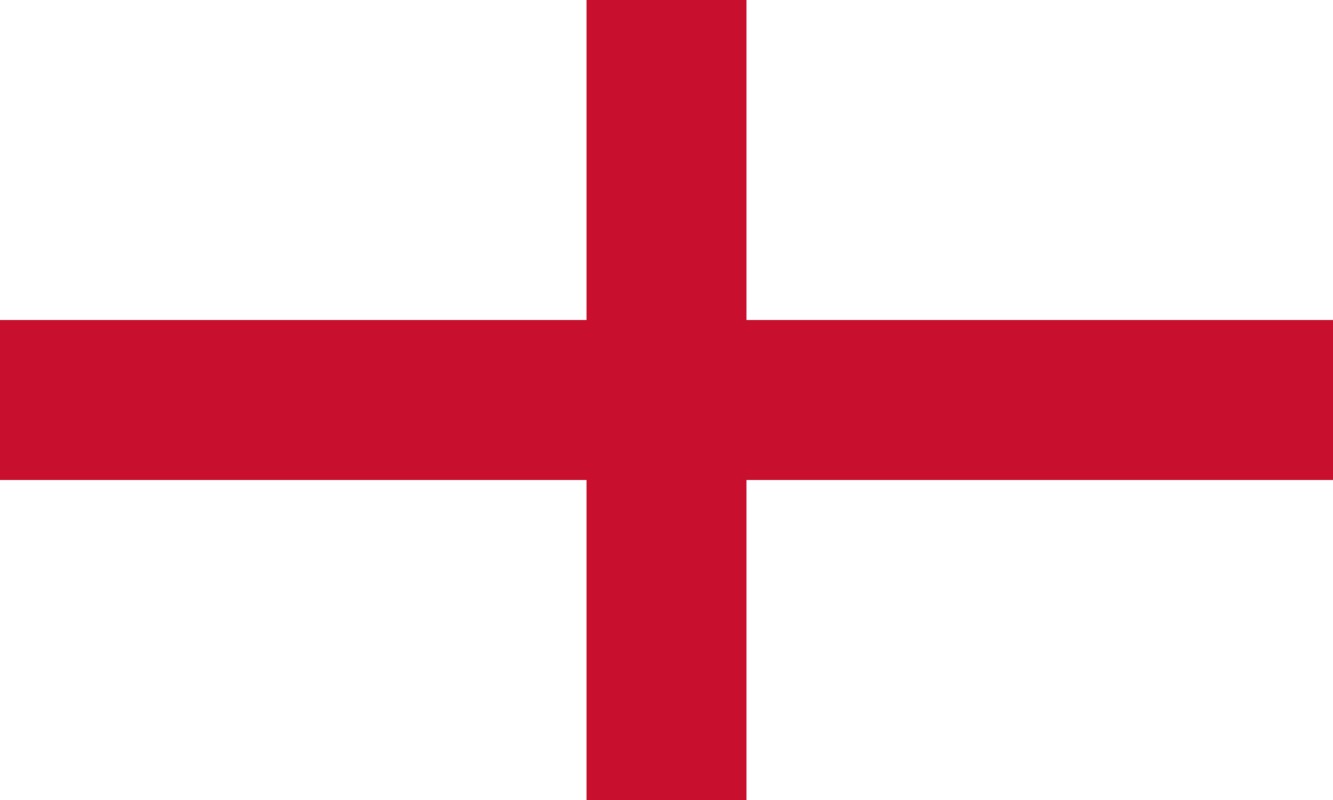 en
en ja
ja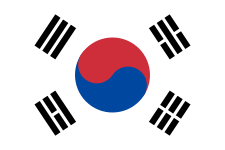 ko
ko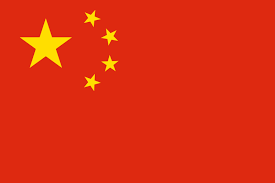 zh
zh


















